- AROUND THE SAILING WORLD
- BOAT OF THE YEAR
- Email Newsletters
- Best Marine Electronics & Technology
- America’s Cup
- St. Petersburg
- Caribbean Championship
- Boating Safety


Class 40 Mighty Mites
- By James Boyd
- May 23, 2023
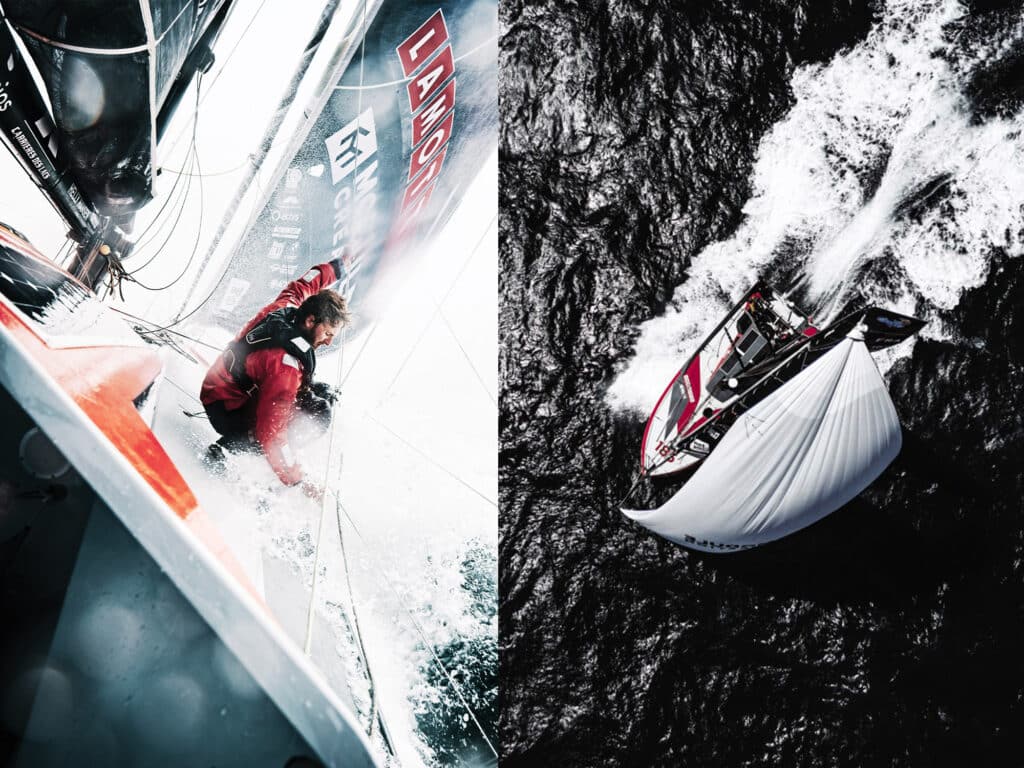
For sailing fans visiting from outside France, the Route du Rhum is a cultural shock, barely to be believed even once seen. It is France’s oldest singlehanded race, first held in 1978, and run every four years from St. Malo in northern France 3,500 miles across the North Atlantic to Guadeloupe. The fleet of 138 boats that assembled for the start in November 2022 was incredible, with an estimated value of 260 million euros—from the implausible 100-foot Ultime trimarans to a record fleet of 38 IMOCA 60s and a similarly impressive fleet of 55 Class40s. Dock sides are crammed with spectators, many hoping to catch a glimpse of the top skippers—some are genuine sports stars. Had the 2022 start not been delayed, French President Emmanuel Macron was to have attended. It’s that much of a big deal.
In the days and hours before the Route du Rhum started, more than 1 million people passed through its race village in St. Malo. In this environment, even non-French amateurs, such as the two US Class40 skippers, Alex Mehran and Greg Leonard, gained celebrity status with relentless autograph signing, selfies with fans and press interviews. Usually outshone by the bigger, higher-profile boats, the Class40 is the most successful 40-footer of all time. While the Farr 40 never topped more than 40 boats at a world championship, this is the second Route du Rhum in which more than 50 participated. To date, 192 Class40 hull numbers have been allocated.
While “Open 40s” once competed in the OSTAR and Around Alone, the Class40 came about independently. Born in France in the early 2000s, two designs defined the class: the Pogo 40 and the Jumbo 40. But the success and longevity of the Class40 is due to its highly constrictive box rule, drafted by a group that includes wise French sailor and journalist Patrice Carpentier, which remains robust 18 years on.
The box rule’s basic parameters are a maximum length overall of 39 feet, 11 inches; max beam of 14 feet, 9 inches; draft of 9 feet, 10 inches; average freeboard of 3 feet, 6 inches; max mast height of 62 feet, 4 inches; max working sail area of 1,238 square feet; minimum displacement at 10,097 pounds; and max water ballast of 1,653 pounds per side. Most brutal are the materials limitations: Carbon fiber, aramid, honeycomb cores and pre-preg resin are forbidden from the construction of the hull, deck, interior structure and fittings; go down below on one and, joyously, thanks to the GRP construction, it is not coffin black.
Carbon fiber is permitted for the mast, boom and bowsprit, while standing rigging must be steel rod. Sails are limited to eight, and all but two and the heavy-weather jib must be polyester and nylon. A single fixed keel and as many as two rudders are permitted, but daggerboards and foils are banned, as are canting, rotating masts, mast jacks, and adjustable or removable forestays. However, complex kick-up rudders are permitted. (Although their effectiveness to kick up in a collision is allegedly dubious.) Over the years, displacement and average freeboard have slightly reduced, but the biggest rule amendment has limited “how scow” Class40 hull shapes can be. While the latest foiling Protos in the Classe Mini (the “flying bathtubs”) are fully flat-bowed, Class40 has two max beam limits just short of the bow to prevent this. Naturally, costs have risen, but the rule has successfully limited them; today, a top Class40 costs 700,000 to 800,000 euros.
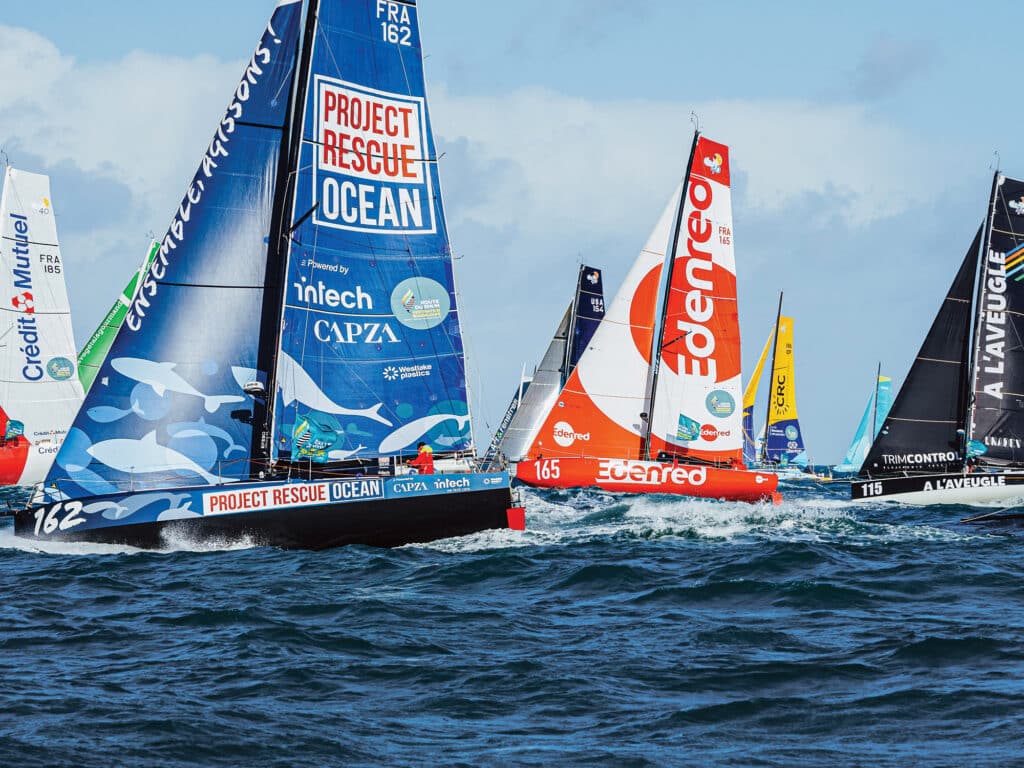
Those sailing the Class40s in the early days were a mix of pros and amateurs. Today professionals on sponsored boats are the majority. As for aspirant French pro sailors, the Class40 has become a significant stepping stone between from the Classe Mini and Figaro circuits to the IMOCA.
As skipper of Groupe SNEF , leading Mini and Figaro skipper Xavier Macaire says: “The transatlantic races like this [Route du Rhum] are very interesting to us, and the boat is not very expensive. The Class40 is easy to maintain and prepare, and is not a complicated boat like an IMOCA where you need 12 guys. With this, you need two or three, not full time. It is an easy, fast boat.”
With more top pros like Macaire joining, 30 new Class40s have been launched in the last four-year cycle. The most recent Route du Rhum podium, for example, comprised two-time Solitaire du Figaro winner Yoann Richomme ( Paprec Arkea ) and Mini Transat winners Corentin Douguet ( Queguiner-Innoveo ) and Ambrogio Beccaria ( Allagrande Pirelli ) of Italy.
Of the French classes, the Class40 and the Mini remain the most cosmopolitan, with entries from other European countries, notably Italy at present, while the United States, Australia and South Africa were also represented in the Route du Rhum. Far from being put off by the pro element, Americans Alex Mehran and Greg Leonard were thrilled to be on the same starting line. “It is such a privilege to race against some of the top offshore sailors in the world,” says Leonard, who hails from Florida. “It is like playing football against a first team in the NFL—it is that level of quality. There are not that many sports you can do that in.”
Both American skippers came to the Route du Rhum from similar paths. With his Mach 40.3 Kite , Leonard is a professional economist originally from Texas. He campaigned a J/120 for many years with his remarkable son Hannes, who raced his first doublehanded overnighter with his father at age 13. Now 18 and with thousands of race miles under his belt, both in the US and Europe, he is a Class40 expert. For his father, the Route du Rhum was his first singlehanded race.
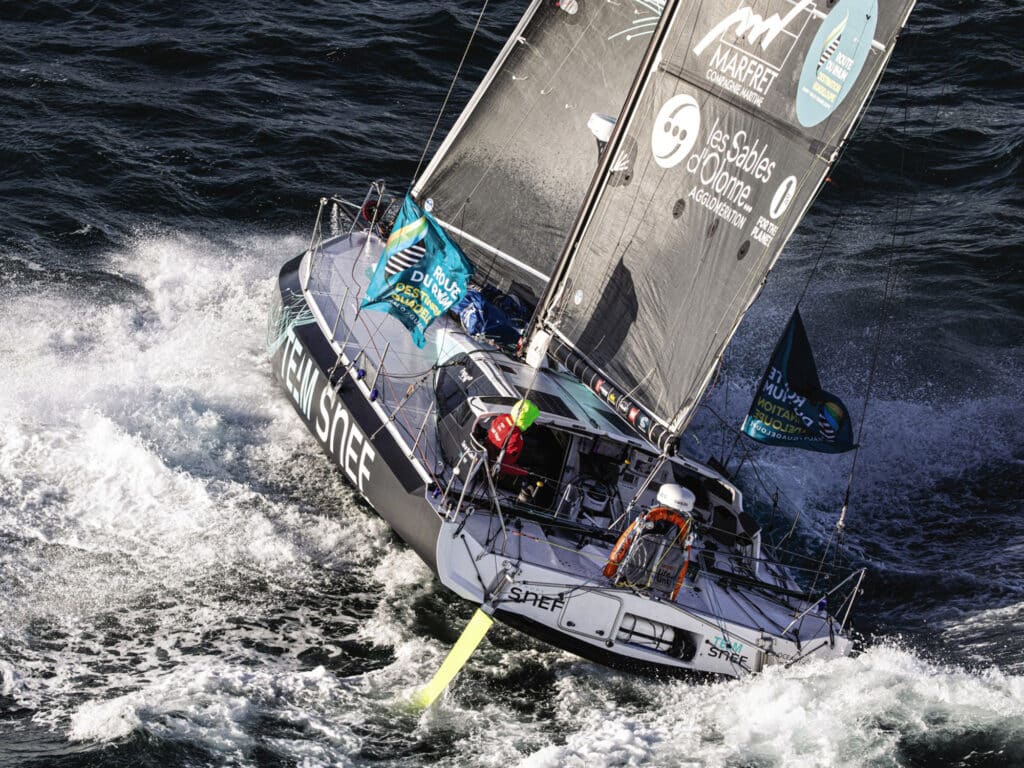
Over the years, several top shorthanded sailors, notably British Vendée Globe skippers Mike Golding and Miranda Merron, have raced with him, also coaching him. He is very enthusiastic about the Class40: “They are beautiful boats, such fun to sail. When we delivered her to St. Malo, we had 28 to 40 knots just aft of the beam, and we just hung in the low 20s boatspeed, and it was finger-light steering.”
Mehran skippers Polka Dot , which has the perfect pedigree, being Yoann Richomme’s 2018 Route du Rhum winner—a Lift V1 design. Growing up as part of the St. Francis YC Laser squad and subsequently a Brown collegiate sailor, he met Welsh Class40 designer Merfyn Owen in 2009 and raced one of his designs. Remarkably, he won his first major singlehanded race, the 2009 Bermuda 1-2. He subsequently graduated to an Owen Clarke-designed Open 50, in which he set a record in 2012’s singlehanded Transpac. He then went off, had four kids, and developed his commercial real estate business before getting the itch once more last year. He competed doublehanded with Owen in the 2021 Transat Jacques Vabre on an old Class40, but as Mehran puts it, “We needed to get something scow.”
He too has been receiving coaching from Merron and Golding, among others. According to Mehran, one of the most difficult things to explain to those back home is less the offshore-racing fever that afflicts French fans, but that their skippers are not multimillionaires. Instead, they come from a wide age group and all have commercial backing to either buy a secondhand boat or—if they are higher-profile, more accomplished or just plain lucky—build a new one. So, returning to the Route du Rhum podium, Paprec’s business is waste disposal (admittedly, its owner races his own Wally 107), Arkea is banking and insurance, Queguiner is building materials, Innoveo is an app-development platform, and Pirelli makes tires (its CEO has a Wally 145).
Over the last two decades, the Class40s themselves have evolved, despite Draconian design limitations. What started as cruiser-racers with fitted-out interiors became racer-cruisers and are now refined pure racers. They may not be black inside, but the build quality of the latest-generation designs is of the highest standard, and it seems no longer possible to buy a cruiser-racer.
A delight of the Class40 is that no one designer is dominant; eight different designs make up the 30 boats built over the last four years. Pogo Structures, last of the original builders, is on its fourth version of its Pogo 40, the S4, designed by Emirates Team New Zealand’s naval architect, Guillaume Verdier (who also designed Structures’ scow-bowed flying Proto Mini).
The man who developed the first blunt-fronted scow Mini, David Raison, produced the Max40, built by JPS in La Trinité-sur-Mer. Also built by JPS are Sam Manuard designs—the Mach 40.4, such as the 2021 Transat Jacques Vabre winner Redman , skippered by Antoine Carpentier (nephew of the original rule’s writer), and now its evolution, the Mach 40.5, of which two competed in the Route du Rhum.
In 2020, VPLP made its first foray into the class with the Clak 40, built by Multiplast, of which four raced in the Route du Rhum, the top finisher being Martin le Pape’s Fondation Stargardt. Etienne Bertrand, another successful Mini designer, had two Cape Racing Scow 40s in the race, while Allagrande Pirelli , believed to be the most expensive of the latest crop and campaigned by last year’s Mini Transat winner, Ambrogio Beccaria, is an all-Italian affair designed by Gianluca Guelfi and built by Sangiorgio Marine Shipyard in Genoa.
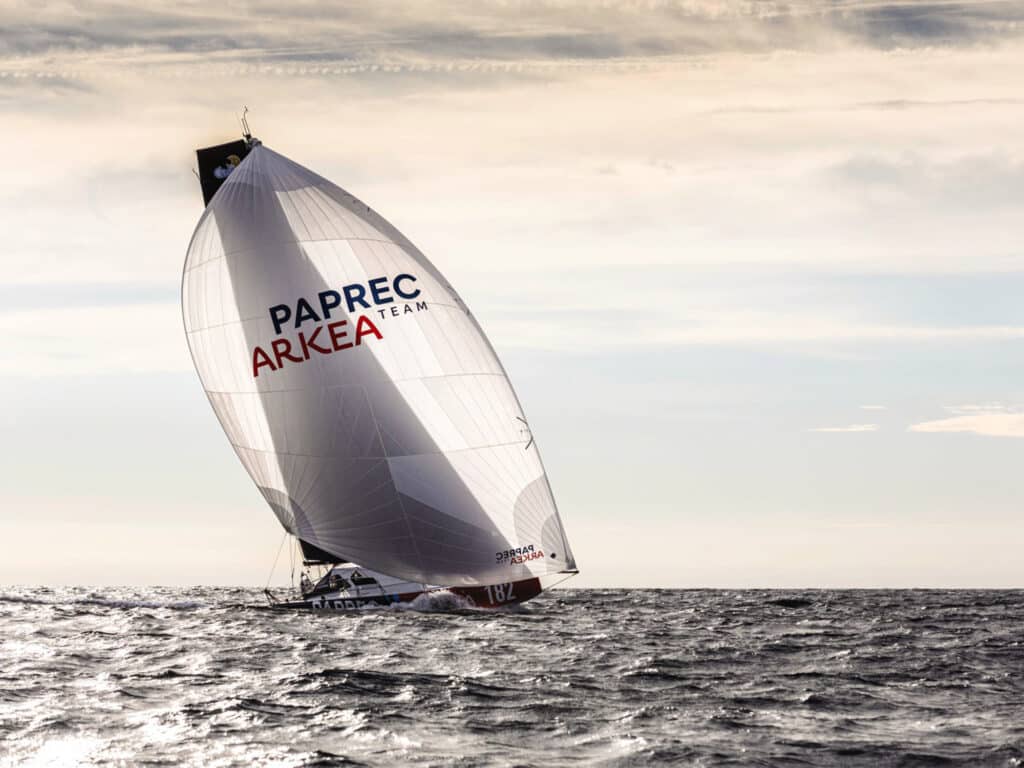
However, after the recent Route du Rhum, nosing in front in the design race is Marc Lombard with his Lift V2s, of which seven were racing, including Yoann Richomme’s winner, Paprec Arkea . Lombard is one of the longest continuous players in the Class40, and has worked with Tunisian manufacturer Akilaria on its RC1, RC2 and RC3 models since 2006, of which 38 were built. His latest designs have been the Lift, introduced in 2016; Veedol-AIC , one example, took Richomme to his first Route du Rhum victory. The Lifts were custom-built with a hull and deck made by Gepeto in Lorient, but finished off by the V1D2 yard in Caen, and were more precisely engineered and built than the Akilarias. They were superseded this cycle by the Lift V2, the most popular of the new Class40s, with seven competing.
For Richomme, the Route du Rhum was a small distraction from having a new IMOCA built. He entered the Route du Rhum to defend his title and stay race-fit. If the first Lift was an early scow, the present one is at the limit, to the extent that it has a bump in the hull 2 meters aft from the bow at the limit of where the Class40 rule restricts the max beam to prevent such extreme scowness.
The scow bow provides more righting moment, but it also does interesting things to the boat’s hydrodynamics. “With a pointy bow, the keel is more angled and creates more drag,” explains Richomme, who is also a trained naval architect. “When a scow heels, the hull is almost parallel to the keel, so sometimes when we go over the waves, we can feel the keel shudder when it is producing lift. The chine is low and therefore very powerful, and when we heel, it makes for a very long waterline length. Also, we have very little rocker, whereas other [new] boats have a lot, which creates a lot of drag so they don’t accelerate so well when they heel.”
The Lift V2 “is a weapon reaching,” Richomme says. “We can hold the gennaker higher than we used to. Last time, I didn’t even take one. But with the power going up, so have the loads, and we are having problems with the hardware. I have broken two winches already.”
A downside of the big bow and straight chine is downwind, where the technique seems to be preventing the bow from immersing. Paprec Arkea is typically trimmed far aft, including the stack and the positioning of the 1,653 pounds of water ballast (most new boats have three tanks each side), while its engine is 19 inches farther aft, and the mast and keel 11 inches farther aft than they were on his previous boat. They are 77 pounds below the minimum weight, which Richomme admits may be too extreme—during training they broke a bulkhead.
Otherwise, their increased cockpit protection is most noticeable on all the new designs (although not to IMOCA degrees), while most have a central pit area with halyards fed aft from the mast down a tunnel running through the cabin. On Paprec Arkea , a pit winch is mounted just off the cockpit sole. With the main sheet and traveler lead there as well, Richomme can trim from inside the cabin.
Most extraordinary about the scows is how fast they are. Anglo-Frenchman Luke Berry, skipper of Lamotte-Module Création , graduated from a Manuard Mach 40.3 to a 40.5 this year and says: “It is a massive improvement both in speed and comfort. Reaching and downwind, we are 2 knots faster, which is extraordinary.”
The top speeds he has seen are 27 to 28 knots. “Most incredible are the average speeds—higher than 20.”
This effectively turns yacht-design theory on its head, with waterline length and hull speed having less effect upon defining the speed of a boat that spends so much time planing. On the Mach 40.5, the waterline is just 32 feet, with a length overall of 39 feet. Compared to the Lift V2, it has more rocker, supposedly making it better able to deal with waves.
Nowhere is the speed of the latest Class40s more apparent than where they finished in the Route du Rhum in comparison to the IMOCA fleet. Paprec Arkea arrived in Guadeloupe ahead of 13 IMOCAs, or one-third of the way up the IMOCA fleet. Richomme says he used to sail on a Lombard-designed IMOCA 20 years ago, when they would make 10.5 knots upwind. “On a reach, I reckon we are faster than them now. We can do 20 to 22 knots average speed.”
Ugly seems to be quick, but when it comes to the Class40, beauty is in the eye of the beholder of the trophy.
- More: Class 40 , Offshore Racing , Print March 2023 , Racing , Sailboat Racing
- More Racing
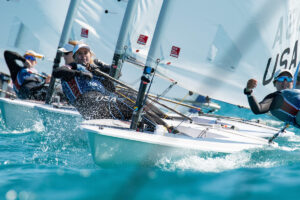
Reineke’s Battle For the Berth
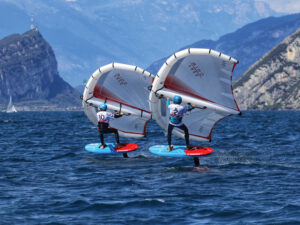
One-Design Wingfoil Racing Takes Off
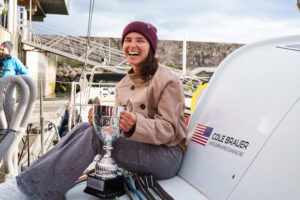
Brauer Sails into Hearts, Minds and History
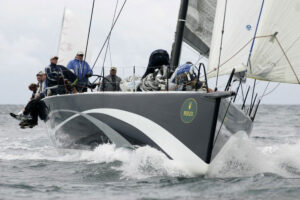
Anticipation and Temptation

America’s Offshore Couple

Jobson All-Star Juniors 2024: The Fast Generation

- Digital Edition
- Customer Service
- Privacy Policy
- Cruising World
- Sailing World
- Salt Water Sportsman
- Sport Fishing
- Wakeboarding
Solo Challenge
Cole Brauer and the Class40 First Light at the GSC: A Woman’s Breath Over the Ocean
- Margherita Pelaschier
©Samuel Hodges Photography
Cole Brauer , a young American sailor, entered in the Global Solo Challenge aboard her Class40 First Light, adds a feminine touch to the event with her infectious enthusiasm and passion for sailing. Cole works tirelessly to prepare for her round-the-world trip and has assembled a team that shares her values and assists her in managing the project. “Sailing is both my profession and my hobby; I never take breaks. Preparing for a round-the-world race means constantly thinking about the next step. Thankfully, I have an extraordinary team that supports me and tries to relieve the psychological pressure so I can focus solely on the race aspect. Moreover, I wholeheartedly believe in my boat and her equipment.”
For her round-the-world journey, Brauer chose a boat to which she is sentimentally attached: “I’ve always wanted to sail around the world and envisioned doing it on a boat I know, love, and trust. For this reason, I chose First Light. To me, she embodies all of this. When we’re at sea, I talk to her as if she were my child. When she’s fine, I’m fine. We have a wonderful relationship and deep mutual understanding: when things aren’t going right, I feel she’s showing me she’s doing her best to improve the situation. Furthermore, as a Class40, she was born and built sturdy and resilient for challenges like this.”
First Light was previously named Dragon, and Cole had captained the boat for four years before she was sold to the Day brothers, who subsequently changed her name. The two brothers didn’t have enough time for the boat, so they asked Cole if she’d continue sailing her and develop a racing program. Initially hesitant and busy with other boats, Cole eventually agreed and relocated to Florida, where First Light was based. She participated in various races, honing her skills and forming an even stronger bond with the Class40. This led to her desire to expand her horizons to international competitions. “The original plan wasn’t to participate in the GSC; I wanted to compete in the Transat Jacques Vabre. However, when one of the Day brothers asked if there was a chance to win it, I said ‘no.’ Given her age, First Light wouldn’t be competitive.”
First Light is a 2008 Class40, designed by Owen Clarke Designs and built in the UK by Composite Creations, the same model as ZeroChallenge (formerly Fuji) sailed by Ari Känsäkoski.
The Owen Clarke design studio, based in Dartmouth, UK, with branches in the USA and New Zealand, is renowned for designing performance cruising and racing boats, superyachts, and high-latitude exploration boats. Their designs range from Mini 6.50s to eighteen Class40s and eight IMOCAs that participated in the Vendée Globe, culminating in the creation of a massive 75-meter aluminum schooner.
Founders Merfyn Owen and Allen Clarke began collaborating in 1993, bringing their unique skills to the table to devise high-performance, seaworthy, and attractive vessels. Merfyn Owen, a graduate of University College London, boasts extensive experience not just in naval architecture but also as a sailor with over 250,000 miles covered in races and expeditions. Allen Clarke, trained at Falmouth Boat Building College and Southampton Institute, is a reference point in the world of Class40s and in the development of fast cruising boats. He gives particular attention to details and aesthetics, thanks to his previous career as an interior designer.
In preparation for the Global Solo Challenge, First Light underwent a detailed refit and thorough examination at the Newport Shipyard in Newport, Rhode Island. “By November 2022, the mast and rigging had already been replaced and are now brand new. First Light was in the yard from June to September this year. The mainsail track on the mast has been reinforced. The keel was inspected, repaired, and subsequently reattached. All running rigging, including halyards and sheets, have been renewed. The team dedicated an entire month to reinstalling the equipment, making sure every single detail was examined. We only entered the GSC a few months ago and therefore started preparations later than other teams. Without the patience and understanding of Newport Shipyard, which believed in this project from the start, none of this would have been possible. First Light’s sails, made by North Sails, are new, and during the Atlantic crossing to A Coruña, I had the opportunity to test them, and I was pleased with the results.”
Cole loves the boat that will help her realize her dream but she is also aware of her weaknesses: “First Light is structurally very sturdy, and I believe she will prove to be a reliable vessel for my project. I know every inch and have explored every corner. However,she has her weak points, such as friction spots that tend to wear out materials rather quickly. She’s a real war machine; she destroys everything in her path, including things trying to make her go faster!”, the sailor jokingly comments.
For power generation, Brauer will rely on the hydro generator and a methanol battery, the Efoy, which can also serve as heating in colder seas. She hopes to primarily use renewable energy sources but will also have the engine’s alternator for emergencies. Moreover, along with the electrician who revised the onboard systems, she’s considering installing backup solar panels.
Regarding rest onboard, the sailor is confident: “I’ve always managed my sleep cycles well onboard. In areas away from marine traffic, I can sleep for two hours, then wake up, check the boat to make sure we’re on course and that the sails are set correctly, and then go back to sleep. I also follow navigation from my bunk, so when I feel drowsy, I sleep. I tactically plan my sleep cycles in relation to sail changes and wind conditions. In light and unstable conditions, like in the Doldrums, it will be harder to stop thinking and turn off the brain.”
There is one distinguishing trait of her character, which the sailor emphasizes, which will probably help her in situations where not every detail can be planned. “In general, I have the ability to let things go. When something doesn’t go right, I might get upset at that moment, but then, much like a goldfish, I forget and move on to the next challenge ahead.”
For provisions, Cole has a very pragmatic approach, revealing she’ll mainly bring dried foods, which she confesses she sometimes even uses on land for the convenience in preparation. “We’ve already prepared bags with three full meals a day, plus one or two snacks to ensure I eat enough.”
Cole’s project is a solo voyage, but one of its pillars is her team. The sailor tells us about what unites all the members of the group and how the message she wishes to convey at the GSC concerns all of them.
“My team has made this journey possible. Before meeting them, I was losing weight due to stress. I called upon the universe for help and was gifted the best team I could have ever wished for. I cannot thank them enough for all the work and energy they’ve invested in this project. I am very happy to be able to share this adventure with them. Special thanks go to the core group: Duncan Nevard, Brendon Scanlon, Jimmy Carolla, and Sammy Hodges, but also to everyone else.
Through my sporting challenge at the GSC, I want to promote the idea that any individual, no matter how “small” or limited they might seem, can achieve great things. Every member of my team, at some point in their lives, has felt overlooked, underestimated, or rejected for who they were. Each of us carries stories of pain and challenge. We came together with the common purpose of realizing this dream, supporting one another.
My desire is to be a competitive sailor but also to maintain a positive and joyful attitude, seizing every opportunity to have fun, smile, and savor every moment. My goal is to give a voice to those silenced and belittled and ensure that, especially women, are taken seriously in the sport of sailing. I just wish it were possible to enjoy the sea and sailing, even in a competitive setting.”
The boat’s name aligns well with the strong social message Cole tries to bring into sailing and sports. First Light, an initial glow meant to illuminate many stories and make them known so that certain episodes don’t repeat. It’s a call for more respect in sport and in life, in general. “I liked the boat’s original name, Dragon, because for the first time, I was in the role of captain. Even though she wasn’t mine, I saw her as my Dragon. However, I also love First Light. It reminds me that, even when everything seems to be going wrong, when everything is shrouded in darkness, the sun will always rise. It’s a certainty and it’s very comforting.”
At sea, Cole Brauer has collected many beautiful memories. Through a woman’s breath on the ocean, we discover how one can feel alive and in the right place.
“One of my favorite sailing memories is from when I sailed in Hawaii. That period marked a turning point in my life. I was born in Long Island, NY, where it’s warm for a few months a year. Then, moving to Hawaii, where good weather is the norm, I realized that I loved living outdoors. I wanted to explore what the world had to offer. I remember one night at sea, under a starry sky without the moon, when I saw bioluminescence lighting up and enveloping the bodies of dolphins as they swam at the boat’s bow… It felt like I was breathing for the first time in my life. Every day, out in the ocean, I stand at the bow of First Light and repeat that same breath. I smile. I cry. I scream. Then, silence. There’s something so magical about the ocean. I can finally… breathe.”
Ready to embark with Cole and her team? “All the members of my team have transformed their lives to join this project; so, I firmly believe we will persuade many more people to come on board with us!”
Cole Brauer and her First Light’s departure from A Coruna is scheduled for October 28 .
The Global Solo Challenge kicked off on August 26. Given its unique format, the 20 skippers will set off in staggered starts over the next four months, depending on the performance of their boats.
For further details on the departure dates of each skipper, please visit this link: https://globalsolochallenge.com/start-dates/
To follow the route of the skippers at sea, a tracker is available on the Global Solo Challenge website: https://globalsolochallenge.com/tracking/
Latest Updates
News articles.
Global Solo Challenge Copyright © 2022. All rights reserved. Website created by Primeconsulting
The Event, its name, logo, website, social media pages and all their content are the sole property of Marco Nannini LTD. All rights, title, intellectual property, Copyright, contractual and other entitlements of and relating to the Event, its name, logo, website, social media pages and all their content, vest in and are retained by Marco Nannini LTD.

LUGANO, Switzerland--( BUSINESS WIRE )-- Alberto Bona and IBSA enter the Class40 “hall of fame” – the category of ocean-going skippers and boats that participate in the most important transoceanic regattas – topping with a brilliant first place the ranking which takes into account the most demanding races of the season .
The Class40 title is much coveted and fought for: over the years, the trophy has been won by some of the leading ocean sailors, and is a milestone in the successful sailors’ prize record. In the 2023 season, the victory of Bona and the Class40 IBSA is destined to be memorable, also because it includes the still unbeaten 24-hour speed record , which he achieved last June 29, during the regatta Les Sable-Horta-Les Sable : 430.47 miles covered in a single day. These significant results were obtained just 16 months after the start of the project that brought IBSA into the world of sailing.
“ We achieved our first goal of the season, ” commented Alberto , “ and I am excited, because, with perseverance and determination, we accomplished a feat that only two years ago was only an ambition, a dream; and I attained this result in my debut year as skipper in the Class40. This victory speaks of sporting performance, planning ability, joint team work, and trust on the part of our sponsor, IBSA. This victory has many meanings, related to the values that we carry forward together with IBSA: courage, commitment, perseverance and the will to create a winning enterprise. ”
Great satisfaction for IBSA , the sponsor of the project, which celebrates the most coveted step on the podium: “ As a partner of this project, ” remarked Giorgio Pisani, Vice President IBSA Group and Project Leader of Sailing into the Future. Together , “ we are very happy with this result, which places the Class40 IBSA at the top of the rankings for the entire season. We entered the world of sailing less than 2 years ago, we celebrated four important podiums in the course of 2023, and today we achieved a victory that rewards long-term planning and work, all in line with the way of thinking and working of a corporation like IBSA. Alberto has grown a lot in these two years: he achieved excellent results, and led us to share his passion for sailing, which has also been expressed in other important projects, such as those dedicated to inclusive sailing. ”
Thanks to two prestigious victories (the RORC Caribbean 600 and the Les Sables-Horta-Les Sables ), a third place in the two transatlantic races (the Défi Atlantique and the Transat Jacques Vabre , which ended at the end of November), and the sixth place in the Normandy Channel Race , Alberto and the Class40 IBSA lead the ranking ; after Giovanni Soldini, Bona is the second sailor of Italian nationality to reach the first place, within an international project that unites Switzerland, France and Italy.
Ornella Reccia – [email protected] – mob. +39 329 393 1922

- #SailingIntoTheFuture
Social Media Profiles
- IBSA Group/Facebook
- IBSA Group/LinkedIn
- IBSA Group/YouTube

Map tracker
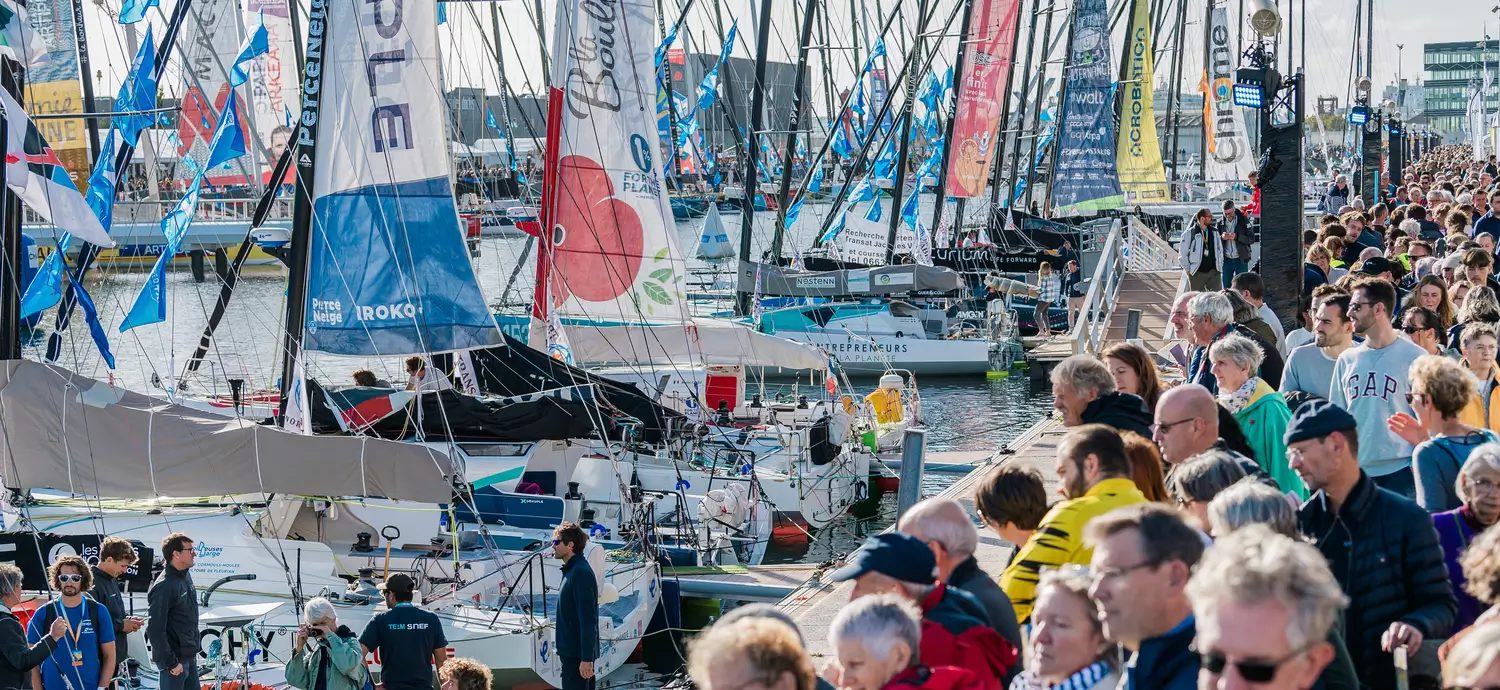
Class40: sailors and scows
In this category, there were 16 boats in 2011, and not far off three times that twelve years later. The figures reveal all. The Class40 fleet has grown considerably over the years. As in the IMOCA class, there has been a leap forward in terms of quantity but also quality. “ This is a crazy fleet and it is hard to make any forecasts,” said Yoann Richomme, winner of the Route du Rhum in Class40, who knows all about these boats. In the list of those of those hoping to win the race, we cannot avoid mentioning Ambrogio Beccaria, who has developed an incredible boat and is capable of sailing her particularly well, allowing him to make it to the podium ever since the start of the season. In terms of the race, the name of the skipper from Milan and the Alla Grande Pirelli, winner of the 2019 Mini-Transat joined by Nicolas Andrieu for his first attempt, keeps popping up, as does the pair on Crédit Mutuel with the co-skippers, Ian Lipinski and Antoine Carpentier, who have between them clocked up four wins in this race. We need to keep an eye to on IBSA with Alberto Bona and Pablo Santurde Del Arco, winner of the race in 2021, and indeed on all the expert Figaro racers that have joined in.
Figaro racers out in force
Yoann Richomme admits that after the Figaro, it was easy moving up to Class40 “ to learn about high speeds. ” Many other Figaro sailors took the step and were won over by this circuit, which opens the door to ocean racing. That was the case for Alexis Loison (La Manche # Evidence Nautique, with Nicolas Jossier) and Guillaume Pirouelle (Seafrigo Sogestran, with Cédric Chateau). It is similar for the pairs on Amarris (Nebout-Mahé) and Groupe SNEF, comprised of sailors who have experience in the one-design circuit. “ It looks so much like the start of the Solitaire,” joked Xavier Macaire, co-skipper of the latter. “ When we head off, there will be twenty of us in with a chance of winning. Favourites and outsiders. Without piling on the pressure, that reminds me that we are going to have to do particularly well. It is common for Figaro racers to see a large number of strong competitors without feeling afrid of that,” said the skipper who has been joined by Pierre Leboucher, who is sailing “ as if sailing solo but with a strategy we drew up together.” The same goes for the pairing of Delahaye-Douguet (Legallais), which did not have the time to settle in with the brand new scow launched in late August, but they both have a lot of experience, particularly from one-design boats, to be able to get out in front. “ There are a lot of new boats and technically the standard is very high, but we are sailing double-handed, which levels out things. This will be our tenth trip aboard this new scow. She is a development from the Lift V2, which has already shown what she can do and has already been through tough conditions. We are not worried about our ability to withstand what lies ahead after the start of the race,” said Fabien, winner in Class40 in 2011.
Quantity, quality, diversity
Having said that, it is important to stress that the class works well because of its great diversity. That is particularly so when sailing double-handed, when the pairings only work if the couple works well together. That is the case for Edenred, with the young, talented Basile Bourgnon, 2 nd in the last Solitaire du Figaro joining up with the sailor-businessman, Emmanuel Le Roch. “There are a huge number of boats that could make it to the podium. This is the way into racing between the IMOCAs and the Figaros,” confirmed Tanguy Leglatin, trainer at Lorient Grand Large. The coach who works alongside skippers looking for performance, has gone over to the other side for this transatlantic race aboard Everial with Erwan Le Draoulec, winner of the Mini-Transat. As a skilled observer of the fleet and the sailors taking part, although as a newcomer, he adds: “ There are always owners who enjoy themselves in these transatlantic races with very decent boats. They have managed to keep costs down in comparison with the IMOCAs, so the class has found its place. It has managed to keep the owners-amateurs with some solid skills.” This is an opinion shared by the relentless Kito de Pavant, who has clocked up eleven attempts. “I have done all the Transat Jacques Vabre races this Century - in Orma, IMOCA, Multi50 and Class40. The class has been through a real revolution with 45 new boats built in three years with skippers who don’t come merely from Figaro racing, but also from the Olympic and Mini circuits. The standards have well and truly been raised, as the boats are so attractive. This is one of the classes where the podium places will be most hotly contested, even if it is going to be tricky for the boats with pointed bows. We can expect some surprises with so many eager youngsters,” commented the skipper from the Mediterranean, who will be alongside the experienced doctor, Bertrand Guillonneau, aboard a new generation boat that has been well prepared and will be up there in the battle of the scows.


- CLASSIFIEDS
- NEWSLETTERS
- SUBMIT NEWS

Cole Brauer and the Class40 First Light in Global Solo Challenge: A woman's breath over the ocean
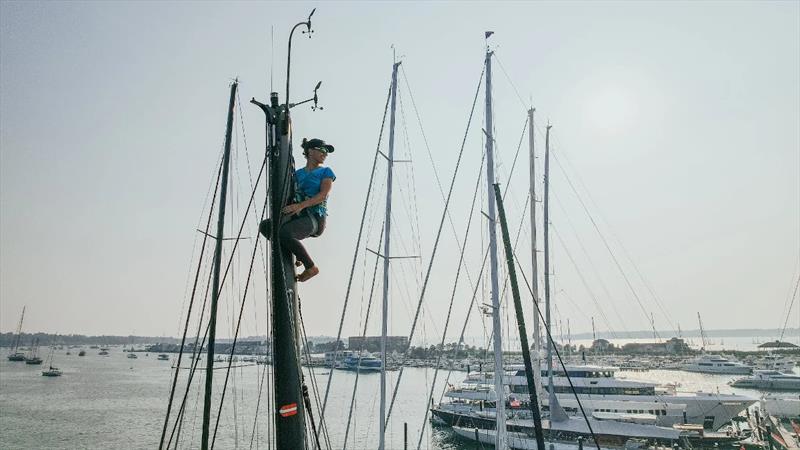
Related Articles
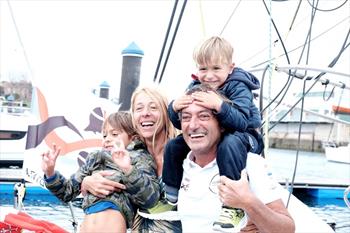

Merfyn Owen, Marc Lombard & Britton Ward on the Class 40
- August 13th, 2016
Since I set first set foot on a Class 40 Racing Yacht – the Pogo 40 operated by Sailingisland.de on a fast trip to the Island of Helgoland and back (read it here and here ) – I was fascinated by this class: Seemingly effortless fast sailing with +10 knots even in light breezes, fantastic behavior of the boat beating, reaching and close hauled and a load of space on a 40 feet boat only comparable to +45 feet ordinary boats. Pogo-Virus had me.
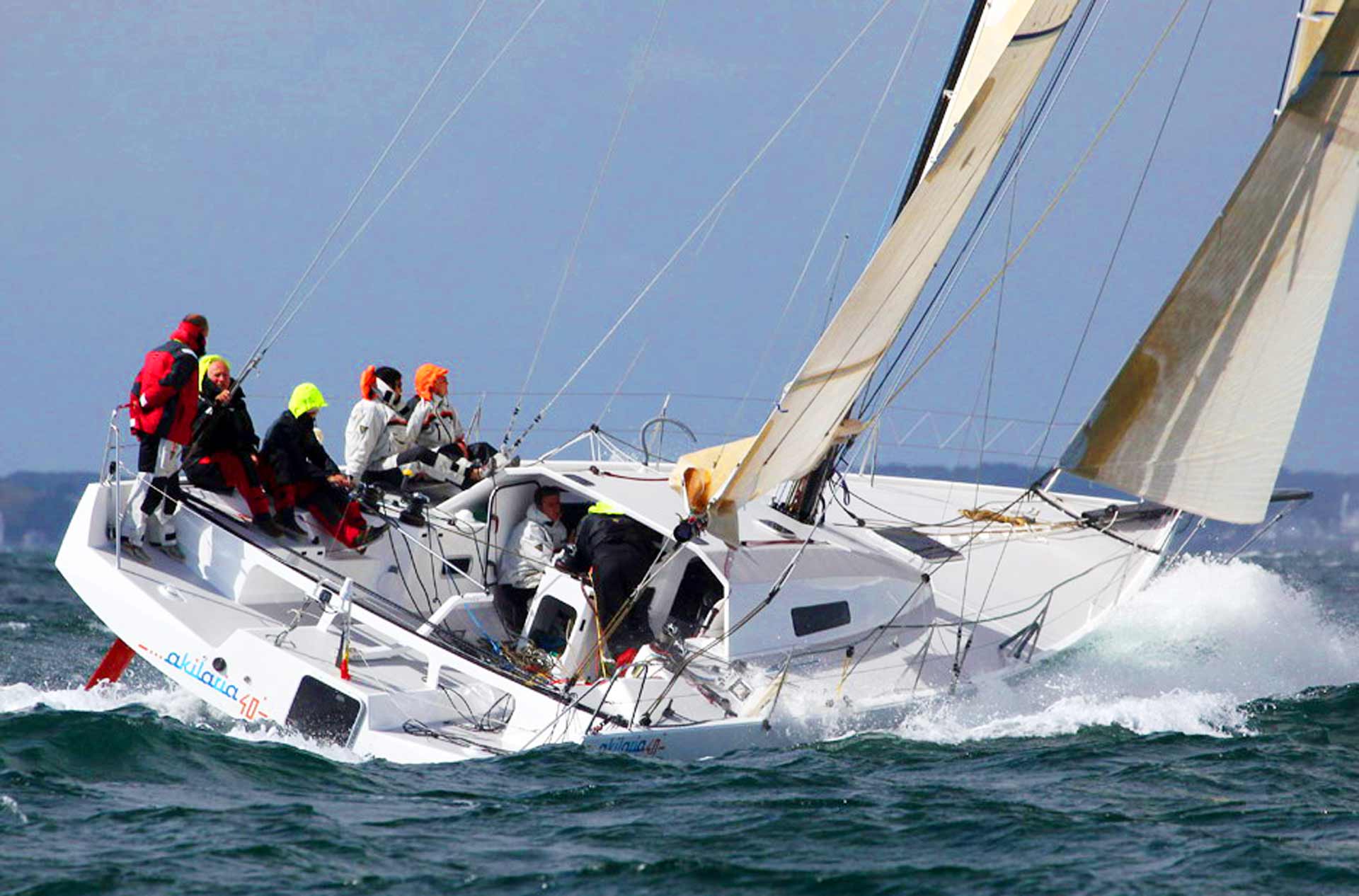
Competition is tight and there are a handful of yacht designers and brands offering their ships to both professional and Corinthian sailors. I talked to Merfyn Owen of Owen Clarke Design , Marc Lombard on behalf of the well-known Akilaria Class 40-boats and Britton Ward of renown Farr Yacht Design Bureau in the States on their Kiwi 40 FC-designs.
“We felt we could design a better boat than Pogo Structures.”
I first asked the three designers when and why their design bureaus entered the Class 40 competition.
Marc Lombard: “We first started to design Akilaria Class 40 boats in the year 2005. This was after the creation of the Class Box Rule and Pogo Structures did sell a lot of Pogo 40/1. We felt, we would be able to design and build a lighter boat with a better shape within that rule by keeping it simple to build on a production basis in the same way. First Akilaria hit the waters in 2006 and this RC1-version has been built 22 times in total. From 2009 we did 12 boats of the RC2 and starting in 2012 we are now having our fifth Akilaria RC3 launched. We are currently on a more “proto development”, which one could call the RC4.”
Merfyn Owen: “Our first Owen Clarke Class 40 was launched in 2005 as well. The last of our designs was launched in 2014 with boat number 17. The first of our fifth generation Class 40 racer design is build in South Africa and boat eighteen been ordered already.”
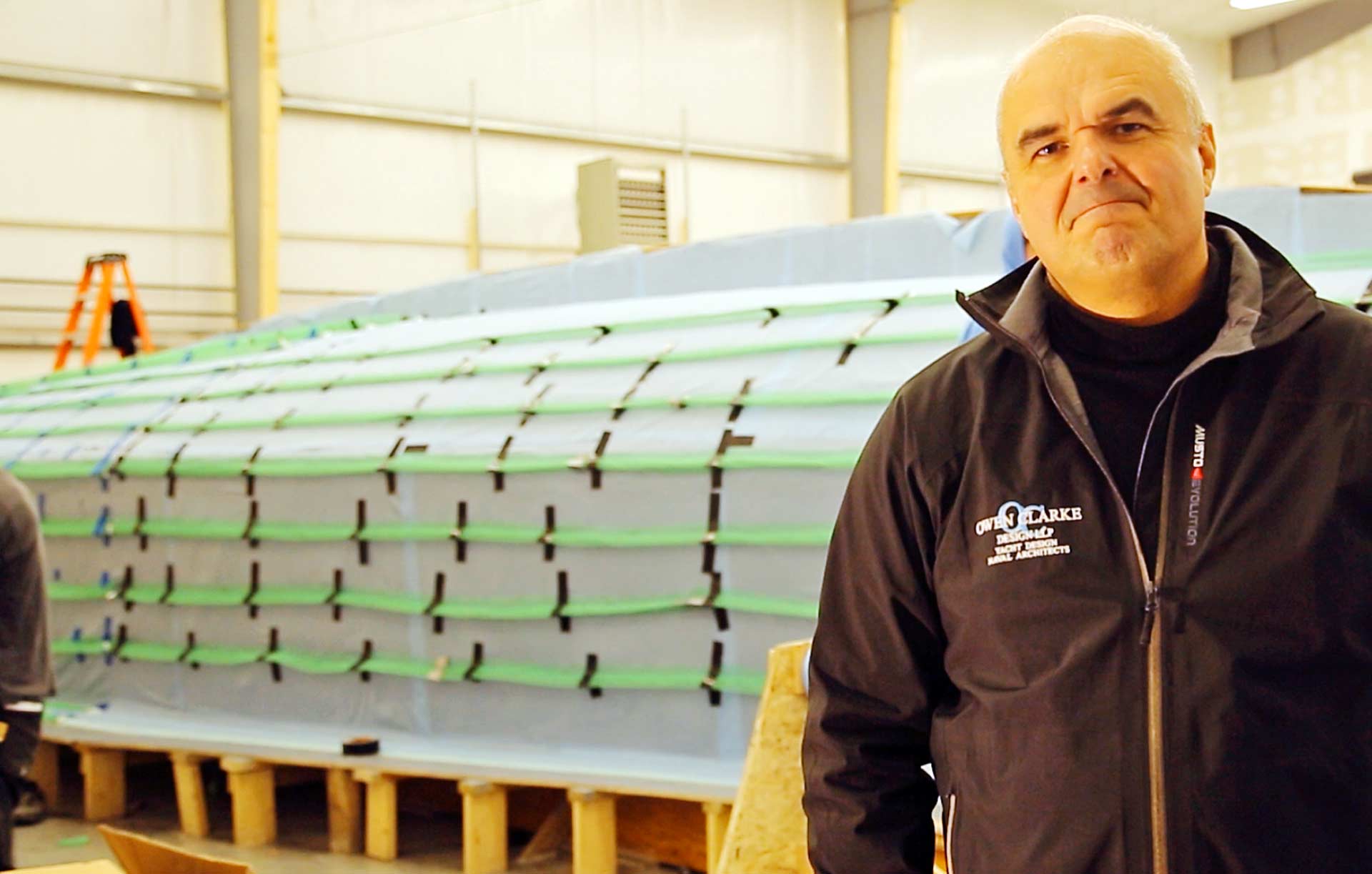
Britton Ward: “In 2009 the class was a rapidly expanding market area and one in which we felt our design capabilities and history were well suited. We began by developing a range of concepts and in October 2009 we contracted with Lapo Ancillotti´s BTBoats of New Zealand to develop a new limited production Class 40 design with the first boat finally launched in August 2010 built by Cookson Boats. The second boat followed in May 2011 and the third Kiwi 40FC was constructed by Hakes Marine in Wellington, launched in January 2012.”
“Corinthians racing alongside Professionals, that´s still one of the great things of the Class 40”
NO FRILLS SAILING.com: “Thanks again, Gentlemen, to spend some time answering my questions. Let´s begin by exploring how and why you three decided to have Class 40 designs produced. What´s the fuzz about the Class Rule and the boats all about? What´s so exciting from your point of view?”
Merfyn Owen/Owen Clarke Design: “This class has been the largest offshore racing class in the world for many years now partly because the rules are stable – with only well considered changes. From the beginning the rules were written to keep a cap on cost and although over the years the boats have become more highly developed and are no longer the racer-cruisers the class began with, limits on construction materials, sail inventory and appendages have kept these boats affordable. Personally I liked very much the fact that it allows Professionals as well as Corinthian sailors to race alongside each other in local and famous international regattas.”

Britton Ward/Kiwi 40 FC: “From its inception the Class 40 rule has sought to promote fast, high performance offshore-capable boats that are well-suited to short-hand-sailing. This is the result of a relatively strict and stable set of rule controls that try to limit build costs and produce equitable performance between different boats. From my point of view, the final ingredient is indeed a diverse calendar of events covering the spectrum between inshore crewed racing, coastal short distance sprints, classic offshore races and trans-atlantics. Many of the boats have completed circumnavigation and we might see another Global Ocean Race for the Class 40´s before too long.”
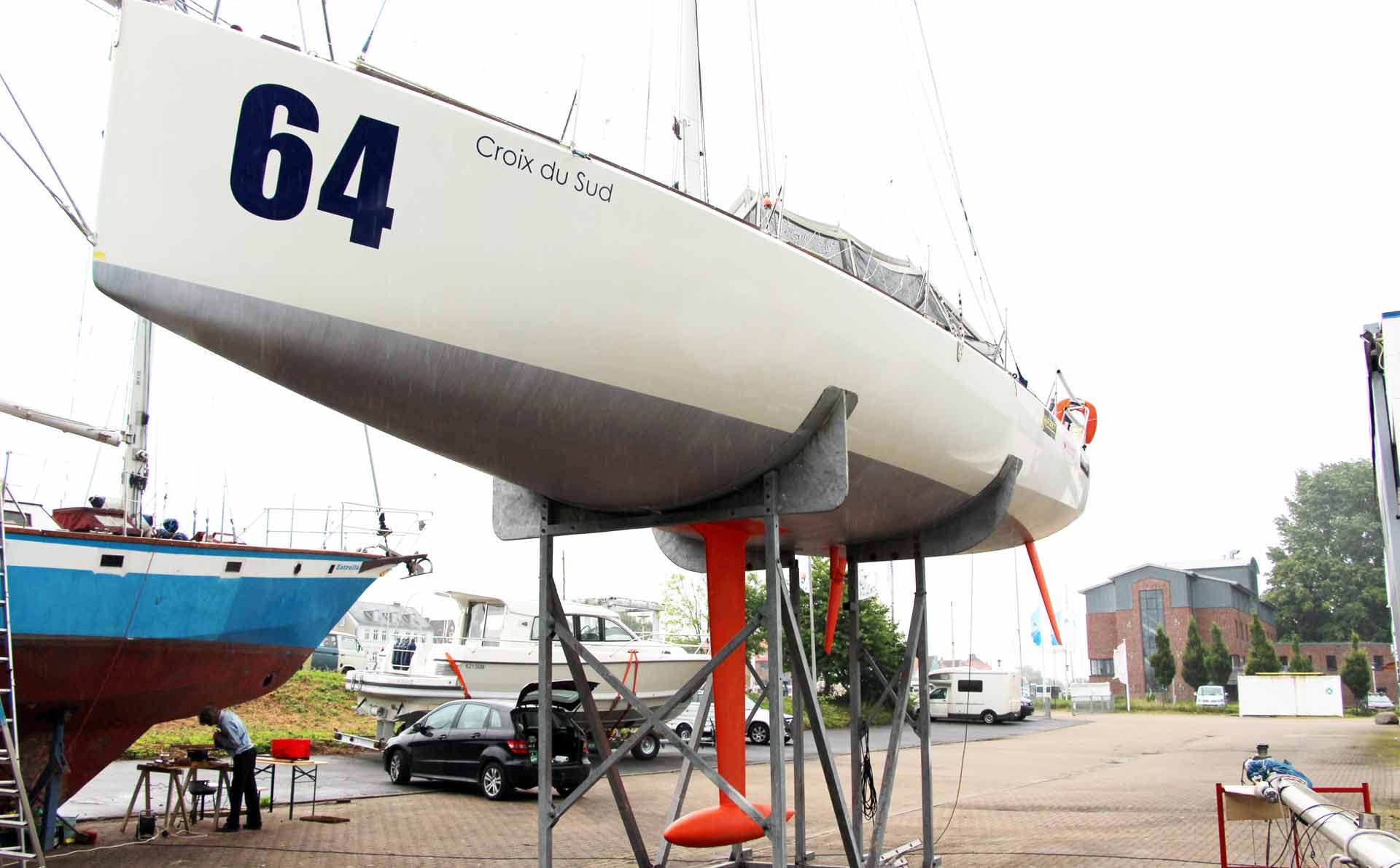
Marc Lombard/Akilaria: “I agree. The great thing with the rule is that by measuring available righting moment and limiting the sailplan area it was possible to design a “production boat” available to a broad number of demanding owners involved in ocean racing. This boat would last a while not being downgraded totally if ne prototypes where to come on the market. I would also agree that the success has come with all the very strong races, partially mixed with IMOCA 60 events attracting many sailors. More than 30 sailors get usually registered in many transat races just on Class 40´s! But on the other hand, what has been true for many years due to the success and more and more professionals entering the game there´s a necessity of constant innovation and progress. The Top 10 of them will always find tricks to have a better machine.”
The Big Name amongst Class 40 Yachts: Akilaria
NFS.com: “Marc, Akilaria is a well know name in Class 40 racing. As you have told us, there´s currently the RC3 third generation of the boat available. Tell us more about the main characteristics of Akilarias and the major developments from iteration to iteration. What´s so special about the RC3?”
Marc Lombard: “With the Akilaria RC1 we tried to build the boats at the minimum allowed weight and at the maximum righting moment. This happened to be “not so easy” with a production boat as you might imagine. But we finally designed a very good hull shape with plenty of available power upwind and very strong oceangoing capabilities in terms of seaworthiness all round. Later, on the RC2 we went for a more optimized construction: A more “regatta dedicated” boat with less freeboard, an optimized sheer line to the rule. On RC2 we also introduced a new optimized keel profile, the option of having lifting rudders in the design, which was also some gain in the total drag in certain sailing conditions. We also went for a more “racy” interior that was totally dedicated to racing, skipping comfort for cruising.”
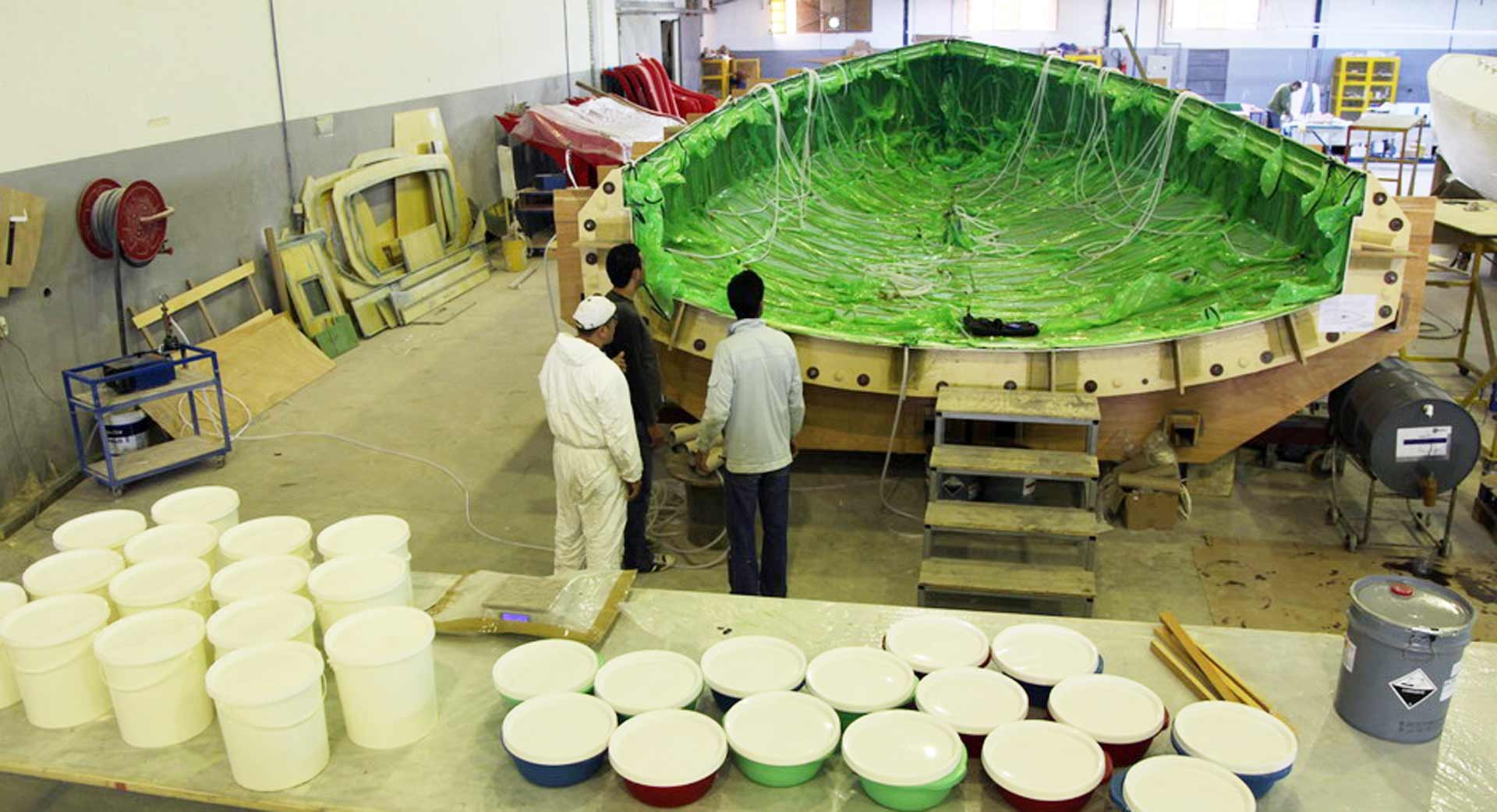
Marc Lombard: “With the RC3 third generation Akilaria we opted for a completely new design, a new hull with more volume of the forward underbody. That was improving the boat for upwind and reaching conditions, we added slightly more freeboard which in fact was again closer to RC1-design which was so seaworthy. Also, lifting rudders again was offered as an option, but overall the RC3 offers a much more comfortable deck plan, totally dedicated to single and double crew sailing with very good protection and ease of maneuvering. Last not least, a very optimized sailplan came through as a necessity, as the class became more professional. What´s special about RC3? It is very close to real prototype design, built as “one off”, with similar performances, but with a price that stays within the “production boats”-range. To make it clear, this is a boat that can be sailed with a budget of around 350.000 euros – compared to the latest “one off protos” where budget is closer to double of that price.”
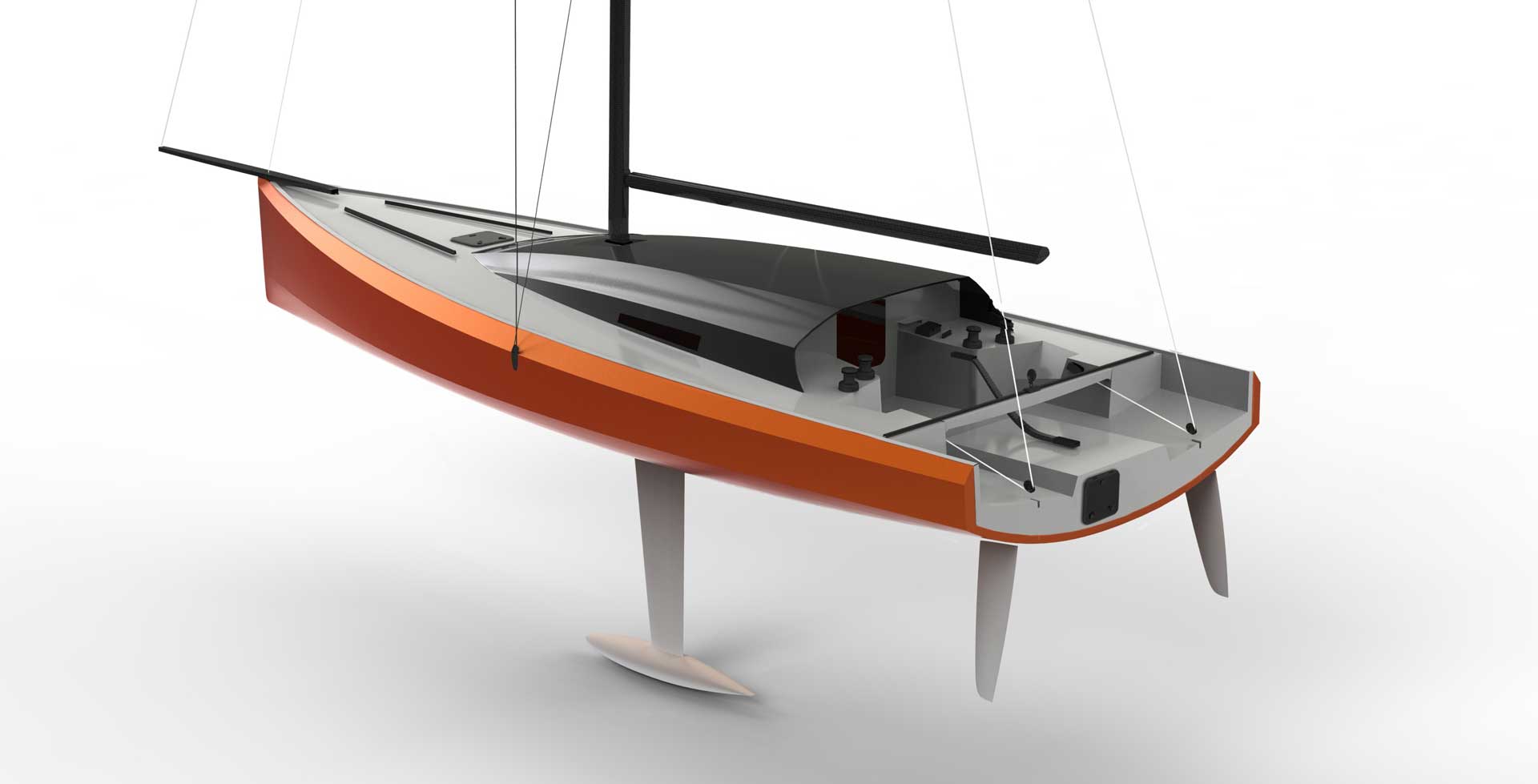
Marc Lombard: “Most exciting features of an Akilaria? RC1 and RC2 I would say are very, very strong seaworthy boats. The RC3 has a very good “all round performance” but with high points up and downwind. The very latest protos can be slightly faster on a reach, but overall the RC3 still performs very well. Strength of the construction is constantly improving and the boats are sailed increasingly harder. As a logical result few boats have encountered problems. For example, when the sailors keep all the speed upwind in very rough weather, facing huge waves. But as a general statement, boats are designed to withstand more loads that what is required in classification society and CE regulation. Much stronger than regular production cruisers.”
Close Competition and Highly Praised Boats: Owen Clarke Design Class 40
NFS.com: “Merfyn, your brand is well known in the class and elsewhere to being able to produce highly capable racing designs. I personally was able to roam about on two of your Class 40 boats and was impressed by the impression these yachts made in terms of rigidity and sturdiness of the design. What´s characterizing an Owen Clarke Class 40 boat?”
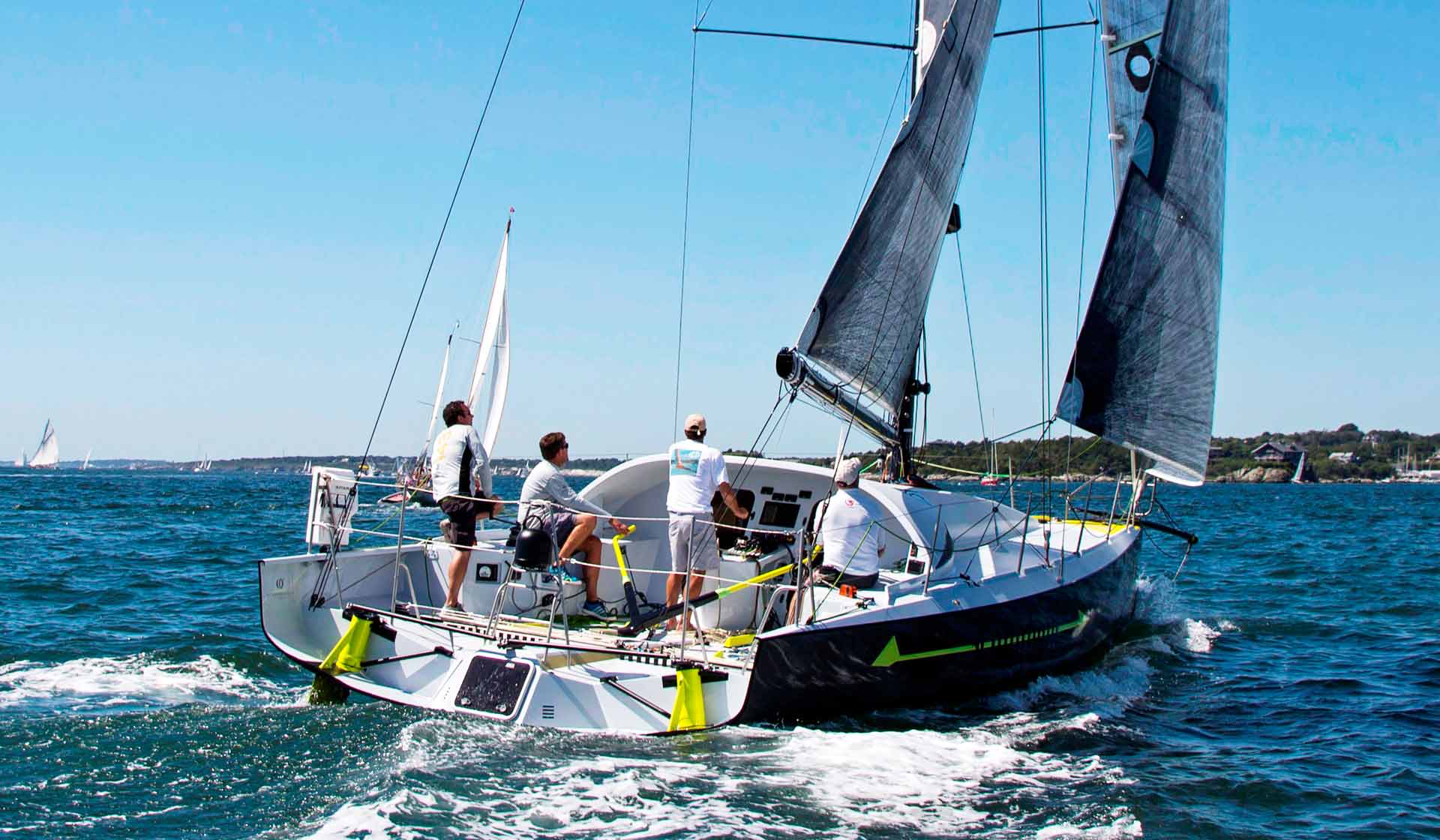
Merfyn Owen: “Race winning potential of course has to be a given for any race boat. Feedback has always been however that our boats are very well balanced, easily driven and very fast/easy to handle in big seas. Reliability has been a feature of the class, with relatively few serious incidents given the millions of miles the boats have sailed so far. A number of Owen Clarke boats have now completed well over 50.000 miles and in the ten years our boats have been racing we’ve had only one dismasting, which has been the most serious incident to date. So in short, I think our boats are known to be fast, reliable and with very good handling characteristics. Our boats have all been polyvalent designs. That means, they are not optimized for any one condition.”
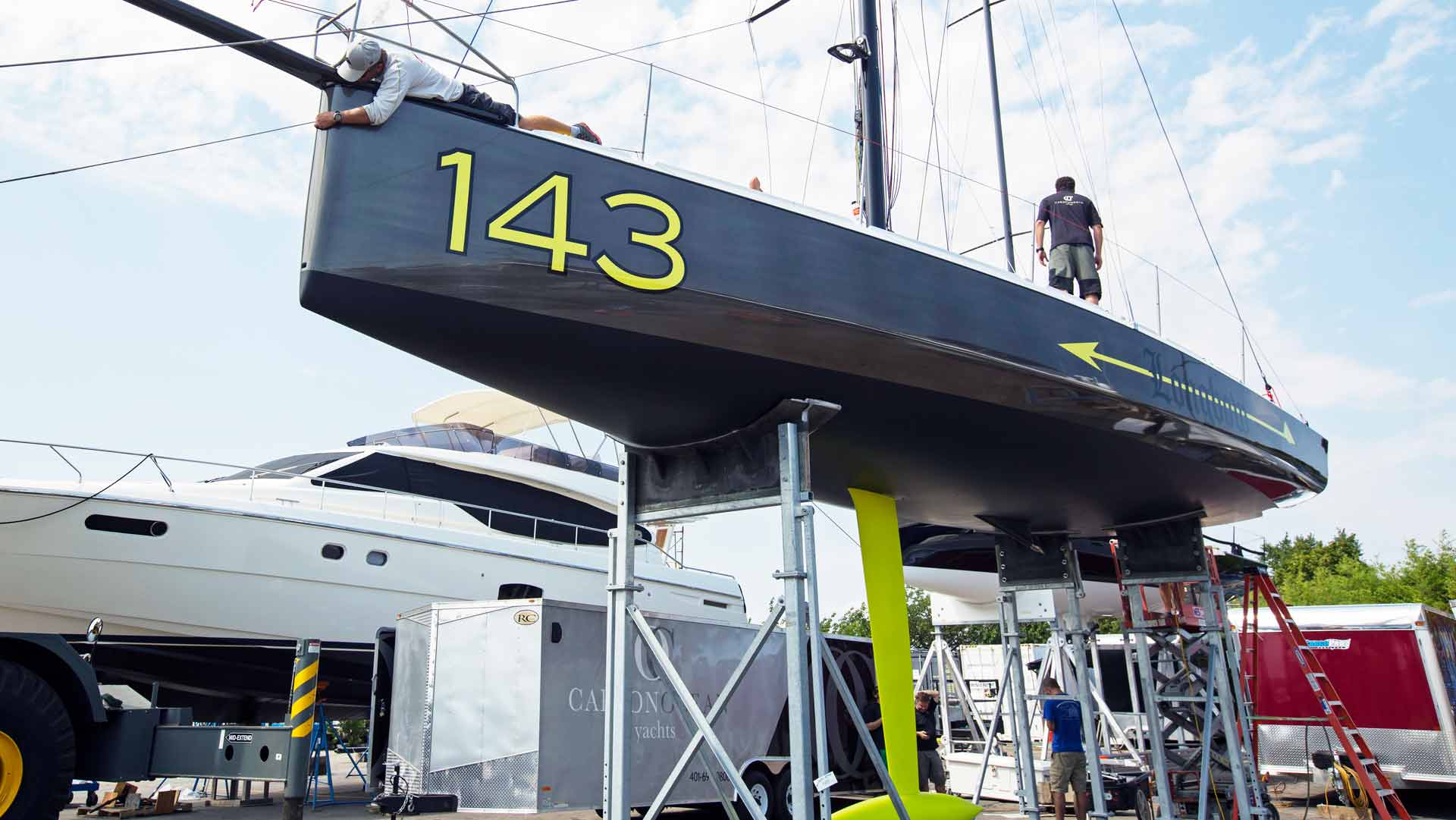
Merfyn Owen: “As we’ve never had a professional race team involved on our 40´s our boats have been designed for owners to win on a variety of courses, not just optimized for one transatlantic race every one or two years. Feedback from sailors have our boats as the best – or at least as quick as the quickest – in upwind and downwind VMG conditions. With the new crop of reaching orientated boats like the Mach 40 and Tyker 4 we’re addressing this to some extent with our new 5G design by winding up the dial in terms of reaching performance to some extent sacrificing some of the upwind and downwind advantage we’ve had in the past. The 5G remains however a polyvalent design in conception.”
NFS.com: “How do you improve the design?”
Merfyn Owen: “We are constantly learning from the sailors. Of course we do sail the boats a lot ourselves, so on the water experience is key. Also the rules change from time to time and new technology becomes available and is quickly introduced into the class. We also use weather databases and routing technology to optimize our boats for particular courses or events when this is applicable. For example, most recently Boat #143 LONGBOW was the first Class 40 to be optimized for races on the east coast of the United States.”
Smallest Fleet, Huge Brand: Farr Design´s Kiwi 40FC
NFS.com: “Though United States-based Farr Design Bureau is one of the world´s leading yacht design capacities, the Kiwi FC40 hasn´t entered the circus in large numbers yet. What are the Kiwi´s main characteristics and will make her easily distinguishable from other designs?”
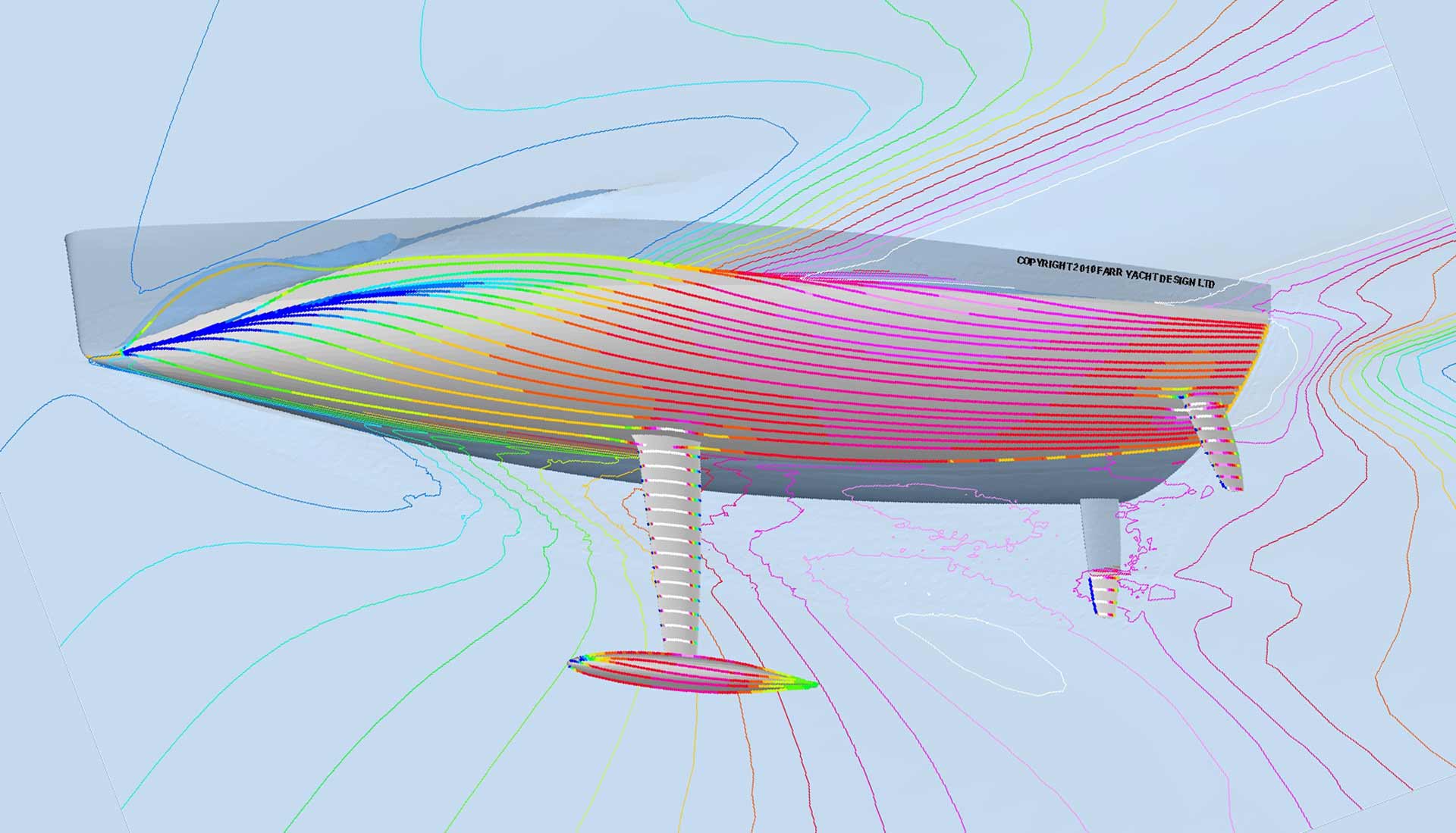
Britton Ward: “The Kiwi 40FC was one of the first Class 40’s to benefit from a comprehensive research program including extensive CFD simulation. The resulting hull shape has a number of signature features that are now seen in all the latest generation of other boats too. The boat features a pronounced, almost full length chine with very evenly radiused sections below to minimize wetted surface and provide a hull with a very even and consistent heel response in drag and helm load. The transom immersion levels and chine placement were carefully tuned relative to expected heel angles and water ballast weight additions to avoid excessive drag in light airs but maximize effective length when sailing at heel and speed. A lot of focus was placed in developing a hull that would achieve a dynamic bow up attitude when sailing at heel and speed so we see an LCB of the hull that is reasonably aft, and an aft placed keel and rig. In effort to maximize effective length forward and provide dynamic lift the Kiwi 40FC features a full stem and waterline ending – something now commonplace on new Class 40 and IMOCA 60 designs.”
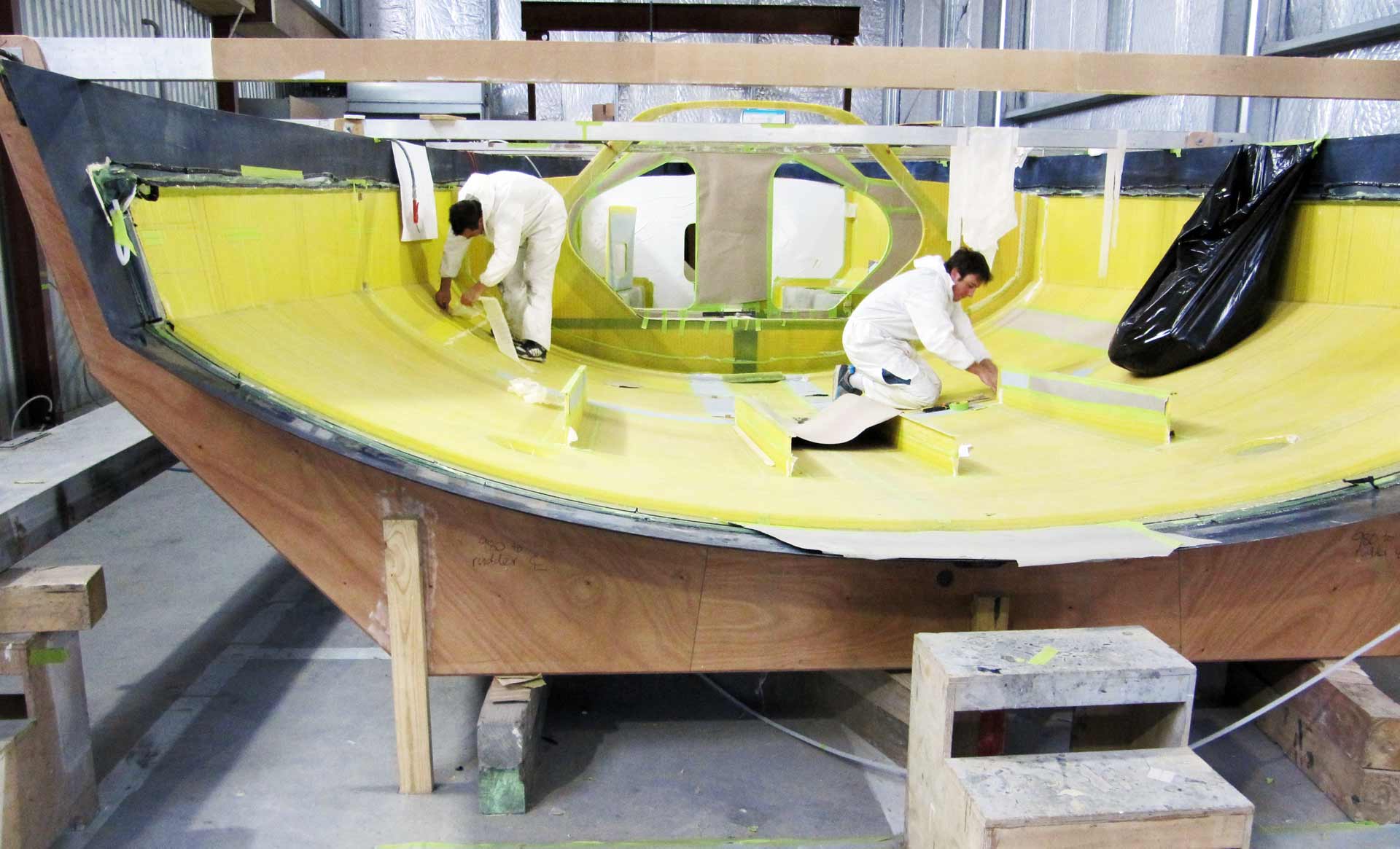
Britton Ward: “What our boats makes special is the fact, that unlike many of the latest designs that have been focused exclusively on distance races, the Kiwi 40FC was developed from its inception as a dual purpose boat – suitable for small crewed inshore racing and offshore singlehanded racing. This required some compromises and allowance for design options and keel changes to re-mode the boat for different purposes. To this day the Kiwi 40FC is regarded as having perhaps the best all-around performance on different points of sail. Kiwi 40FC´s have completed circumnavigations and competed in multiple Fastnet races, transat races, US Atlantic Cups and many other races where podium places have been achieved. To date we have had no reports of any significant damage.”
On the Owners of Class 40 Racing Yachts.
NFS.com: “Who is buying these boats?”
Marc Lombard: “Our customers are sailors who want super sensations of ocean racing without a need of huge sponsors – but on a highly competitive boat.”
Merfyn Owen: “In terms of owners we have a wide spread of nationalities, although we’ve never had a new boat built for a French client. Our new boat clients have been American, British, Scandinavian, German to name a few. Used boats have gone on to be purchased by South Africans, Australasian and – at last – French too.”
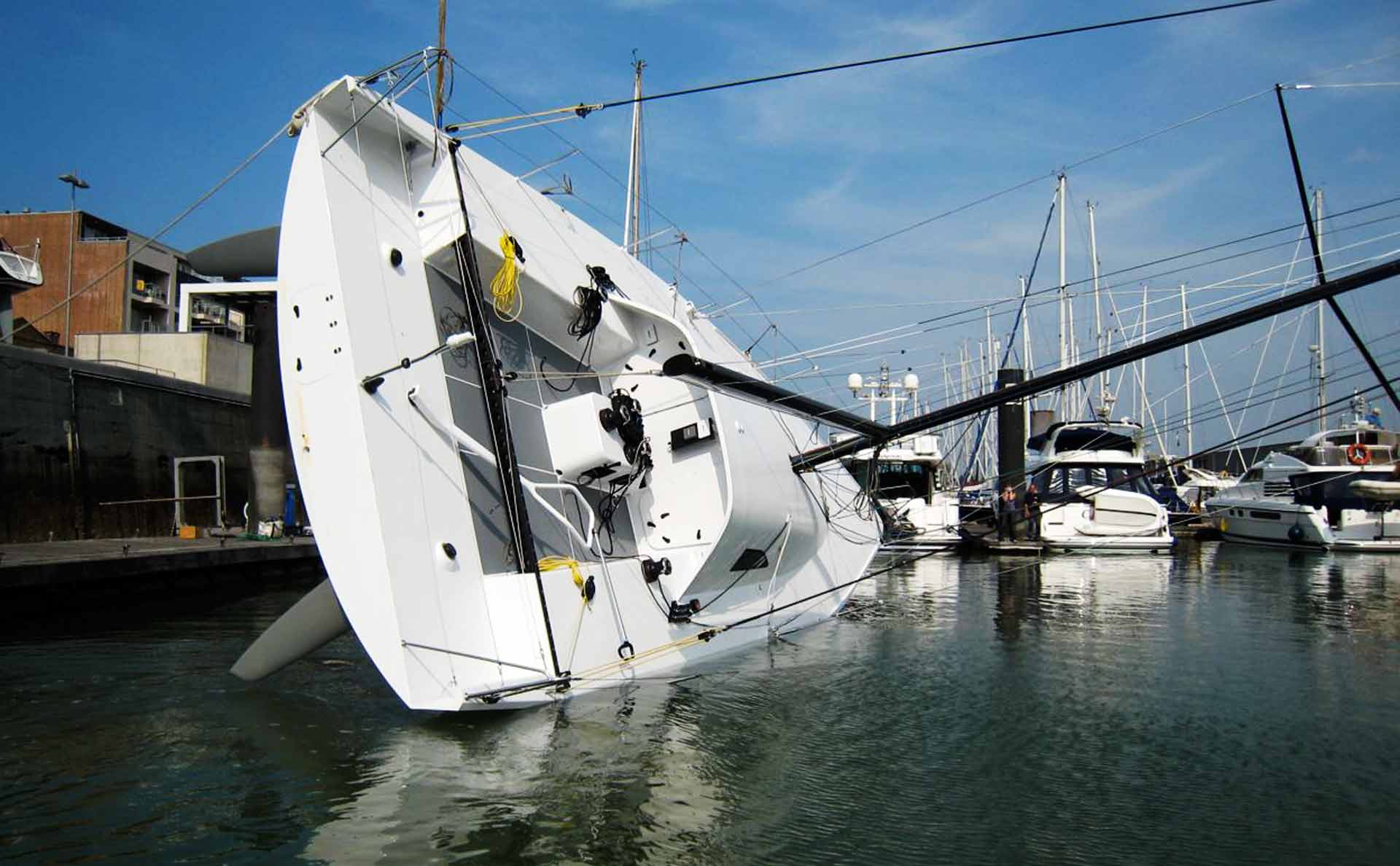
Britton Ward: “Kiwi 40 FC boats were originally bought by private owners with a broad range of experience levels and intended racing programs. All three of our boats are still being raced competitively”
On Improvement of Class 40 Racing Yachts & The Future of the Class
NFS.com: “Where would you say is most room for improvements for your respective boats and the Class 40 in general? Are there any follow-ups of your current designs hitting the waters anytime soon and what can be expected from the Class 40 in – let´s say – five years?”
Britton Ward: “Over the intervening years we have continued to monitor the performance and developments in the Class 40-fleet and feel there is still a lot of room for innovation and development. We have advanced concepts for a new generation of Class 40’s with further hull refinements and alternate deck and interior arrangements and are continuing discussions with potential partners with the hope of bringing a new generation of Farr Class 40s to the market place in the future. What about the future? Offshore yacht design is advancing rapidly with continued improvements in construction methodologies. The continued evolution of canting keels and the advent of dynamic stability foil systems has also advanced. How many of these technologies are permitted in the Class 40 is a question the Class will have to continually wrestle with. One of the reasons for the class’s success to-date has been its adherence to cost-restriction and its accessibility to both Corinthian and Professional sailors. If the class stays true to these principles then I expect the Class 40 typeform to evolve gradually with top performance being achieved by those teams that combine the best sailing with excellent design, refined sails and top quality construction.”
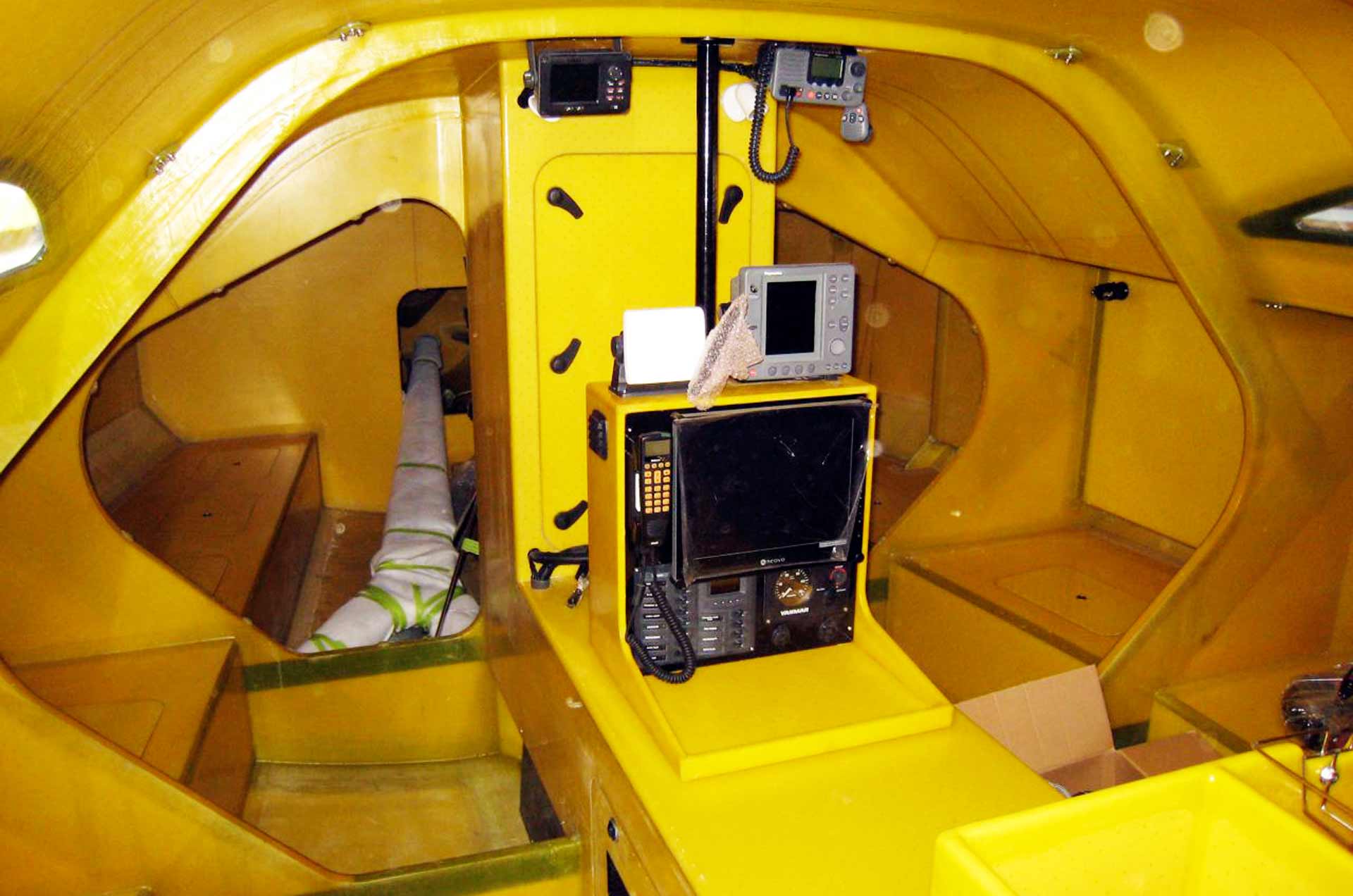
Merfyn Owen: “Providing the rule remains stable it will be a progressive change in the boats nothing radical. You may not even see a great physical difference and for sure some of the boats that exist now will still be on the podium in five years time.“
Marc Lombard: “We are working on an Akilaria RC4 right now, but from my point of view, evolution of the class leads to the fact that we will probably build less and less boats of the same model. This will make the boats become much more expensive, unless something is really done to limit the sailing budgets. Boats are improving all the time, but if you ask me, if nothing serious is done about limiting the budgets adapting the class rules, we could see less than ten boats on a future starting line. For sure, we are at a crucial timing about future development. As on Classe Mini 650 creating or limiting the entry to boats having a minimum of production could maybe a solution. That´s a difficult problem I would say. The class needs progress to be attractive, thus there´s a necessity of new designs, but in the same time we need “not to progress too fast” to stay within reasonable budgeting limits.”
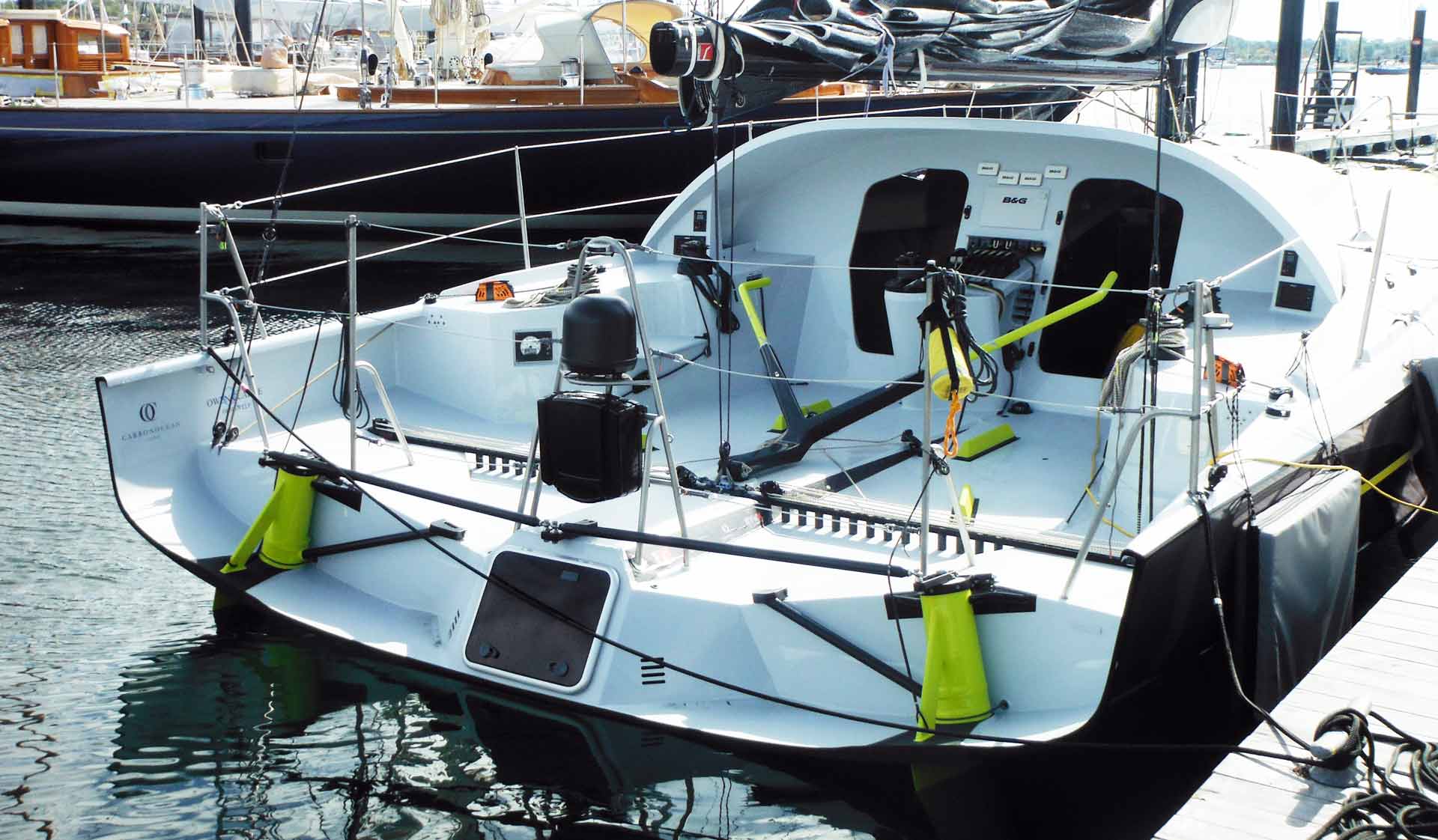
NFS.com: “Gentlemen, thank you very much for providing some answers on Class 40 and giving an intimate insight in your respective boats, constructions and points of view.”
This is how I´ ve experienced my very first sailing with a Class 40 racing yacht
Another interview with Yacht Designer Marc Lombard on his legendary Figaro 2 racing yacht
British young professional Lizzy Foreman on IMOCA 60-sailing

THE CLASS40
What is a class40.
The Class40 is a monohull dedicated to offshore racing. This boat has existed since 2004 as an intermediate oceanic boat, between the Mini 650 (6.50m) and the 60-foot Imoca (18.24m).
A boat framed by a strict gauge: – Maximum length: 12.19 m. – Maximum width: 4.50 m. – Maximum draft: 3 m. – Maximum air draft: 19 m. – Maximum displacement (weight): 4,500 kg. – Maximum sail area: 115 m2. – Ballasts: 1,500 liters. – Fixed keel and mast (tilting keel and tilting mast prohibited). – Maximum removable bowsprit: 2 m. – Average freeboard: must be at least equal to 1.08 m. – Daggerboard and foils prohibited. – Several prohibited materials such as carbon and Kevlar.
Today more than 170 boats have left the sites with a panel of international architects and runners from all backgrounds of sailing, and even from other sport.
Class40 Globe40 the great race by labernik on Sketchfab
The Class40 in action
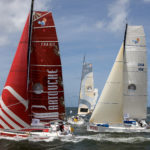
Credit: Jean Marie Liot
Marine News
American david linger's class40 makes it 51 for global solo challenge.
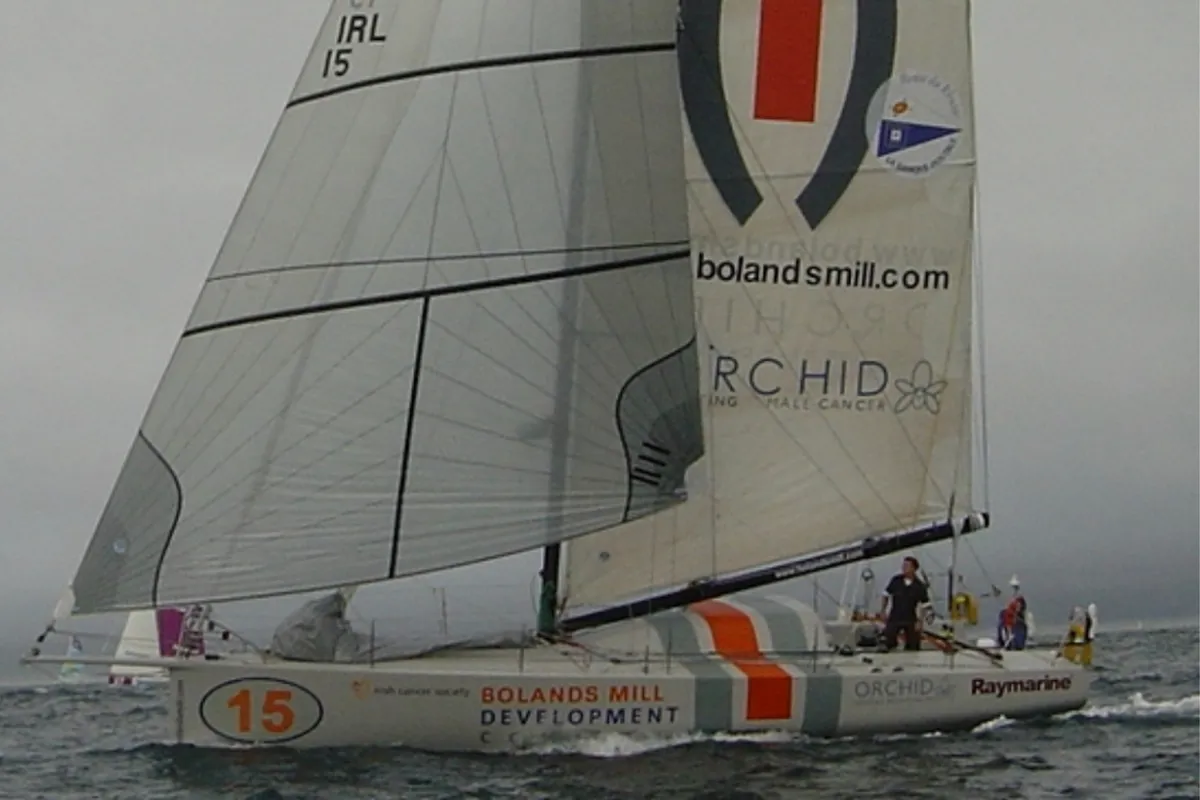
David Linger from Seattle is the 4th American to sign up for the Global Solo Challenge, the 11th Class40/Open40 in the fleet, which is proving to be a popular choice of boat in the event. David had been in touch with the organisers for some time and recently took the big leap to buy “Koloa Maoli”, an Owen Clarke Design Class40 built by Jazz Marine formerly known as “Bolands Mills”. Inspired by his sailing heroes and by his lifelong dream of a solo circumnavigation the right time and planets alignment has come for David to be able to undertake this great adventure. The number of entries keeps growing and there’s still a few that may enter and as one of the participants recently put it, even if just half of the entries made it to the start the GSC would be a tremendous success. We are very please to have hit the nail with the format and spirit for this event and hope to grow it organically and sustainably over the years.
GSC Interview:
Where does your passion for sailing come from? As A Lifetime sailor all my hero’s growing up were all adventurers and or Sailors. Chichester, Colas, Tabarly. Great adventurers and sailors who innovated and did amazing things!
What lessons have you learned from sailing? Teamwork and resourcefulness are required to get boats across oceans, if something breaks or stops working you have to come up with a workable solution to get the job done.
What brought you to like single-handed sailing? Being able to problem solve and do the job “your own way” and get the boat safely from a to b intact.
What prompted you to sign up for this event? It was the combination of the right course at the right time in my life, to be able to make a trip around our planet!
How do you plan to prepare for this event? Well I will sail “Koloa Maoli” this summer to begin to learn the boat then do the long distance solo qualifying voyage. A re-fit this winter for some comfort mods and system upgrades. I’ve started on the “Safety at Sea” requirements and will be meeting the first aid requirements over the winter.
What do you think will be the biggest challenge? Getting to the start line is of course a really big challenge in its own but leaving Spain at the start will be huge! Off into a great big unknown!
Tell us about your boat or the boat you would like to have. I now own a Class 40! USA #15 Koloa Maoli, Ex “Bolands Mill” and it’s a new boat to me so a bit of a learning curve to get up to speed! My friends and I will sail the boat this summer/fall to get a feel for what needs to be updated for the Global Solo Challenge (a small heat source, and a water-maker come to mind!)
Is there anything else you would like to add? Looking forward to an amazing adventure with a large and diverse group of sailors with a shared goal of a trip around the great Capes!
Sailing experience 20.000+ Miles sailed. Currently racing Six Meter class sailboats locally and Internationally and supporting racers in the Race to Alaska “R2AK” with race preparation and support.
About the Boat
Boat name: Koloa Maoli Project: Jazz Marine Class 40 (Owen Clarke Design) Sail number: USA 15 Year: 2006 LOA: 40ft Displacement: 4500kgs Upwind sail area: 115m2 Downwind sail area: 250m2
Click here for more on the Global Solo Challenge

- Find A School
- Certifications
- North U Sail Trim
- Inside Sailing with Peter Isler
- Docking Made Easy
- Study Quizzes
- Bite-sized Lessons
- Fun Quizzes
- Sailing Challenge
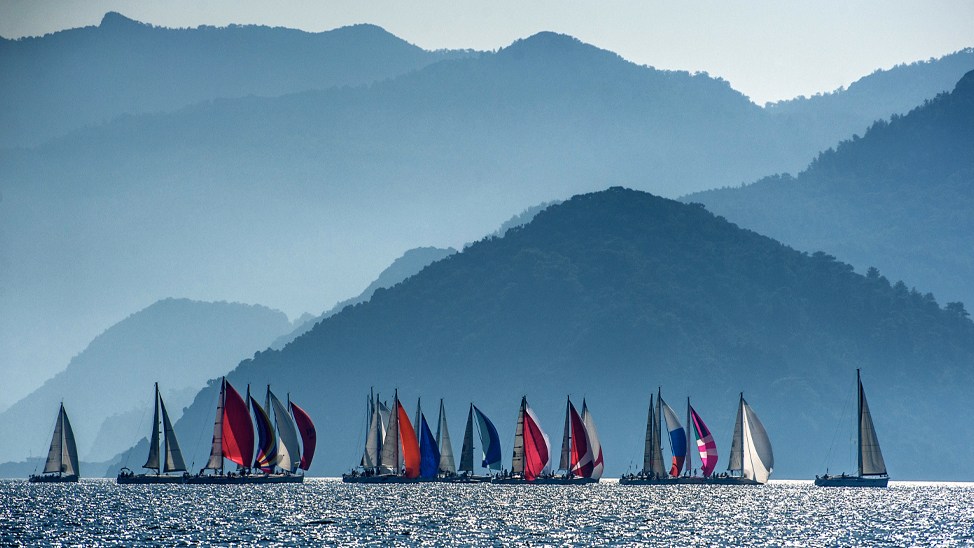

Regional Sailboat Races in the USA
By: Zeke Quezada, ASA Destinations , Sailing Races
Let’s set sail into the thrilling world of regional sailboat races! These competitions offer a unique and exciting twist on the traditional sailing experience.
Regional races center around sailboats vying for supremacy in specific corners of the world, be it a coastal paradise or a cluster of enchanting islands. These events serve as a rallying point for local racers, as sailors hailing from nearby towns and yacht clubs come together to showcase their skills.
What’s particularly enticing about regional races is their inclusivity. Whether you’re piloting a nimble dinghy or commanding a majestic yacht, these races often welcome boats of all types and sailors of all levels. Whether you’re a seasoned sea veteran or a novice setting sail for the first time, there’s a class tailored to your needs at most of these local sailing races.
It’s not all about the competition! Regional races transform into grand sailing events, where communities burst to life for multiple days of festivities while showcasing their local flavor. Sailors gather, forge new friendships, and revel in their shared passion for this incredible sport.
Moreover, these races often offer affordable entry fees, ensuring accessibility to aspiring racers of all backgrounds. Some races may be shorter and less arduous than epic ocean crossings, making them ideal for sailors looking to refine their skills. Regional sailboat races are all about honoring the sport of sailing and the remarkable community it nurtures.
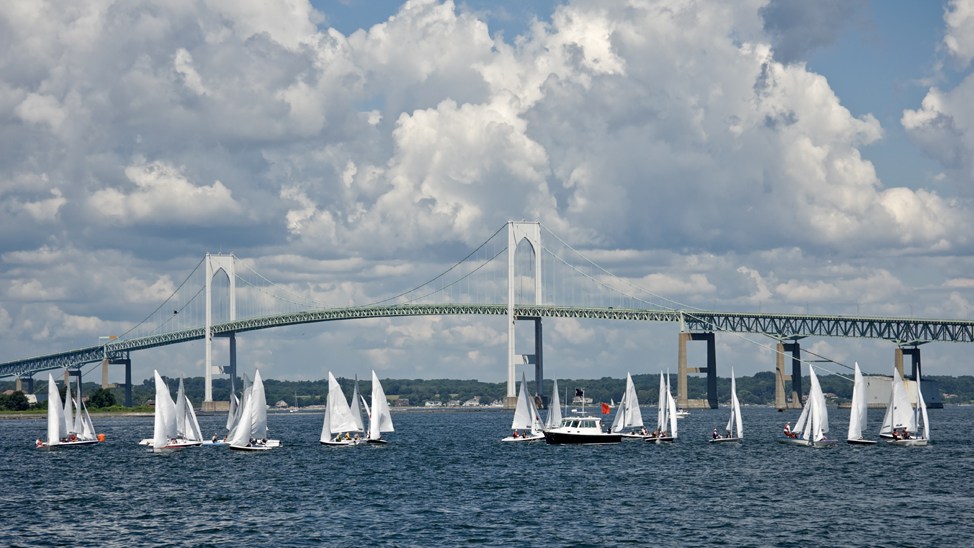
- Website: Marblehead to Halifax Ocean Race
- Description: The Marblehead to Halifax Ocean Race is an offshore yacht race that takes participants from Marblehead, Massachusetts, to Halifax, Nova Scotia. It’s a challenging long-distance race across the North Atlantic.
- Website: Figawi Race Weekend
- Description: Figawi Race Weekend is a popular sailing event that includes both a race and a weekend of festivities. It starts in Hyannis, Massachusetts, and ends on Nantucket Island.
- Website: Block Island Race Week
- Description: Block Island Race Week is a biennial event that takes place on Block Island, Rhode Island. It features a series of races over the course of a week and is known for its lively social scene.
- Website: Vineyard Race
- Description: The Vineyard Race is an offshore race that starts and finishes in Stamford, Connecticut, with a course that takes sailors around Martha’s Vineyard. It’s known for its scenic course and challenging conditions.
- Website: Newport to Bermuda Race
- Description: The Newport to Bermuda Race is a classic offshore race that starts in Newport, Rhode Island, and finishes in Bermuda. It’s one of the most prestigious ocean races on the East Coast.
- Website: Ida Lewis Distance Race
- Description: The Ida Lewis Distance Race is a coastal race that starts and finishes in Newport, Rhode Island. It offers a variety of courses, including offshore and overnight racing.
- Website: Camden Classics Cup
- Description: The Camden Classics Cup is a regatta held in Camden, Maine, that celebrates classic and vintage sailing yachts. It’s a showcase of timeless sailboat designs.
- Website: Nantucket Race Week
- Description: Nantucket Race Week is a week-long sailing event held on Nantucket Island, Massachusetts. It includes a variety of racing classes and social activities, making it a family-friendly event.
- Website: Boothbay Harbor Regatta
- Description: The Boothbay Harbor Regatta is an annual regatta held in Boothbay Harbor, Maine. It features a mix of sailboat racing, social events, and onshore activities.
- Website: Annapolis to Newport Race
- Description: The Annapolis to Newport Race is a classic offshore race that starts in Annapolis, Maryland, and finishes in Newport, Rhode Island. This classic race takes sailors between two of the USA’s sailing epicenters.
- Website: Charleston Race Week
- Description: Charleston Race Week is a premier sailing event held in Charleston, South Carolina. It’s one of the largest regattas in the United States, featuring a wide range of sailboat classes and competitive racing.
- Website: Around Long Island Regatta
- Description: The Around Long Island Regatta is an annual offshore race that circumnavigates Long Island, New York. It’s a challenging race known for its variety of conditions and scenic views along the course.
- Website: Around Martha’s Vineyard Race
- Description: The Around Martha’s Vineyard Race is a sailing race that circumnavigates Martha’s Vineyard, Massachusetts.
- Website: Conanicut Yacht Club
- Description: The Around Jamestown Island Race is organized by the Conanicut Yacht Club and takes place in the waters around Jamestown Island, near Newport, Rhode Island. It’s a local race with stunning views of the Newport area.
- Website: Atlantic Cup
- Description: The Atlantic Cup is a premier Class 40 offshore racing series held along the East Coast of the United States. It features multiple legs and attracts international competitors. The race promotes sustainability and ocean health.
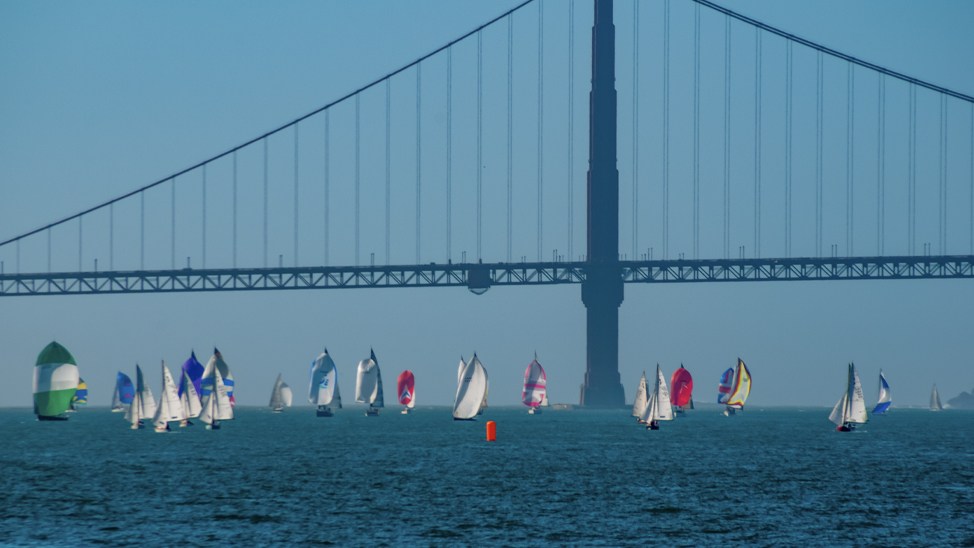
- Website: Rolex Big Boat Series
- Description: The Rolex Big Boat Series is a prestigious sailing event held in San Francisco, California. It’s known for attracting top sailors and a wide range of sailboat classes, making it a highlight of the West Coast racing calendar.
- Website: Pacific Cup
- Description: The Pacific Cup is a biennial offshore yacht race that takes participants from San Francisco, California to Kaneohe, Hawaii. It’s a challenging race known for its long-distance and unpredictable conditions.
- Website: Newport to Ensenada International Yacht Race
- Description: This is one of the largest international yacht races, starting from Newport Beach, California, and finishing in Ensenada, Mexico. It features a wide range of sailboat classes and attracts sailors from around the world.
- Website: Baja Ha-Ha
- Description: The Baja Ha-Ha is an annual cruisers’ rally that starts in San Diego, California, and ends in Cabo San Lucas, Mexico. While not a traditional race, it’s a popular event for sailors looking to cruise along the Baja California Peninsula.
- Website: Swiftsure International Yacht Race
- Description: The Swiftsure International Yacht Race is held in the waters off Victoria, British Columbia. It offers a variety of race courses, attracting both local and international sailors for a challenging competition.
- Website: Round the County Race
- Description: The Round the County Race is a sailing race that takes place in the beautiful San Juan Islands of Washington State. It offers a picturesque and challenging course for sailors.
- Website: Santa Barbara to King Harbor Race
- Description: This race starts in Santa Barbara, California, and finishes in Redondo Beach, California. It’s a popular offshore race along the Southern California coastline.
- Website: Southern Straits Yacht Race
- Description: The Southern Straits Yacht Race is a challenging overnight race that begins and ends in Vancouver, British Columbia. It’s known for its strategic and tactical sailing.
- Website: Long Beach Race Week
- Description: Long Beach Race Week is a multi-day regatta held in Long Beach, California. It features a variety of racing classes and attracts sailors of all levels.
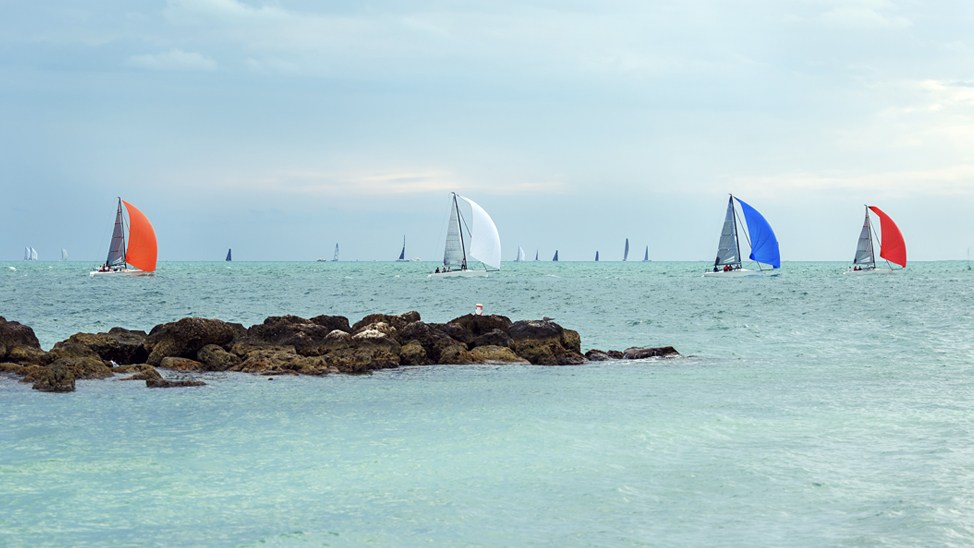
Gulf of Mexico
- Website: Harvest Moon Regatta
- Description: The Harvest Moon Regatta is a popular offshore sailing race that takes participants from Galveston, Texas, to Port Aransas, Texas. It typically takes place in October and is known for its festive atmosphere.
- Website: New Orleans Yacht Club
- Description: The Race to the Coast is a sailing race that starts in New Orleans, Louisiana, and finishes in Gulfport, Mississippi. It’s organized by the New Orleans Yacht Club.
- Website: GBCA Performance Cup Series
- Description: The GBCA Performance Cup Series is a series of sailboat races organized by the Galveston Bay Cruising Association (GBCA) in Galveston, Texas. It includes various races and regattas throughout the year.
- Website: St. Petersburg Yacht Club
- Description: The St. Petersburg to Havana Race is an offshore race that starts in St. Petersburg, Florida, and finishes in Havana, Cuba. It’s organized by the St. Petersburg Yacht Club.
- Website: Clearwater Yacht Club
- Description: The Clearwater to Key Largo Race is an offshore sailing race that starts in Clearwater, Florida, and finishes in Key Largo, Florida. It’s organized by the Clearwater Yacht Club.
Related Posts:

- Learn To Sail
- Mobile Apps
- Online Courses
- Upcoming Courses
- Sailor Resources
- ASA Log Book
- Bite Sized Lessons
- Knots Made Easy
- Catamaran Challenge
- Sailing Vacations
- Sailing Cruises
- Charter Resources
- International Proficiency Certificate
- Find A Charter
- All Articles
- Sailing Tips
- Sailing Terms
- Destinations
- Environmental
- Initiatives
- Instructor Resources
- Become An Instructor
- Become An ASA School
- Member / Instructor Login
- Affiliate Login
Sailor Cole Brauer makes history as the first American woman to race solo around the world
Aboard her 40-foot racing boat First Light , 29-year-old Cole Brauer just became the first American woman to race nonstop around the world by herself.
The New York native pulled into A Coruña, Spain, on Thursday after a treacherous 30,000-mile journey that took 130 days.
She thanked a cheering crowd of family and fans who had been waiting for her on shore.
“This is really cool and so overwhelming in every sense of the word,” she exclaimed, before drinking Champagne from her trophy.
The 5-foot-2 powerhouse placed second out of 16 avid sailors who competed in the Global Solo Challenge, a circumnavigation race that started in A Coruña with participants from 10 countries. The first-of-its-kind event allowed a wide range of boats to set off in successive departures based on performance characteristics. Brauer started on Oct. 29, sailing down the west coast of Africa, over to Australia, and around the tip of South America before returning to Spain.
Brauer is the only woman and the youngest competitor in the event — something she hopes young girls in and out of the sport can draw inspiration from.
“It would be amazing if there was just one girl that saw me and said, ‘Oh, I can do that too,’” Brauer said of her history-making sail.
It’s a grueling race, and more than half of the competitors have dropped out so far. One struck something that caused his boat to flood, and another sailor had to abandon his ship after a mast broke as a severe storm was moving in.
The four-month journey is fraught with danger, including navigating the three “Great Capes” of Africa, Australia and South America. Rounding South America’s Cape Horn, where the Atlantic and Pacific Oceans meet, is often likened to climbing Mount Everest because of its perfect storm of hazards — a sharp rise in the ocean floor and whipping westerly winds push up massive waves. Combined with the frigid waters and stray icebergs, the area is known as a graveyard for ships, according to NASA. Brauer said she was “so unbelievably stoked” when she sailed past Cape Horn in January.
Marco Nannini, organizer of the Global Solo Challenge, said the comparison to scaling Mount Everest doesn’t capture the difficulty of the race. Sailing solo means not just being a skipper but a project manager — steering the boat, fixing equipment, understanding the weather and maintaining one’s physical health.
Nannini cited the relatively minuscule number of people who have sailed around the world solo — 186, according to the International Association of Cape Horners — as evidence of the challenges that competitors face. More than 6,000 people have climbed Mount Everest, according to High Adventure Expeditions .
Brauer stared down 30-foot waves that had enough force to throw her across the boat. In a scare caught on camera, she badly injured her rib near the halfway point of the event. At another point, her team in the U.S. directed Brauer to insert an IV into her own arm due to dehydration from vomiting and diarrhea.
She was able to stay in constant communication with members of her team, most of whom are based in New England, and keep herself entertained with Netflix and video calls with family through Starlink satellites. That’s also how Brauer was able to use Zoom to connect with NBC News for an interview, while she was sailing about 1,000 miles west of the Canary Islands.
While Brauer was technically alone on First Light, she had the company of 450,000 followers on Instagram, where she frequently got candid about life on an unforgiving sea while reflecting on her journey.
“It all makes it worth it when you come out here, you sit on the bow, and you see how beautiful it is,” she said in an Instagram video, before panning the camera to reveal the radiant sunrise.
Brauer grew up on Long Island but didn’t learn to sail until she went to college in Hawaii. She traded in her goal of becoming a doctor for life on the water. But she quickly learned making a career as a sailor is extremely difficult, with professional racers often hesitant to welcome a 100-pound young woman on their team.
Even when she was trying to find sponsors for the Global Solo Challenge, she said a lot of people “wouldn’t touch her with a 10-foot pole” because they saw her as a “liability.”
Brauer’s message to the skeptics and naysayers? “Watch me.”
“I push so much harder when someone’s like, ‘No, you can’t do that,’ or ‘You’re too small,’” Brauer explained.
“The biggest asset is your mental strength, not the physical one,” Nannini said. “Cole is showing everyone that.”
Brauer hopes to continue competing professionally and is already eyeing another around-the-world competition, but not before she gets her hands on a croissant and cappuccino.
“My mouth is watering just thinking about that.”
Emilie Ikeda is an NBC News correspondent.

- Presentation
- Board of Directors
- Races open to Class40
- Championship
- RDR 2022 selection
- Minutes of the Executive Meeting
- Class rules
- Appendix to class rules
- FFV/world sailing documents
- Constitution and internal regulation

3 fiche(s). Page 1/1
- 29 mars Spi Ouest France BPGO
- 29 mars SNIM
- 7 avr. Niji 40 - transat Belle-Île Marie-Galante

1 fiche(s). Page 1/1
Class40 was born as a result of the distillation of excellent yet simple ideas. Designers, sailors and boat builders had been working on the idea of a dedicated offshore race boat for some years prior to the creation of the Class in 2004. A boat somewhere in between a Series Mini and an ocean-going 60 footer. A true race boat of course, but more than that… a boat sufficiently seaworthy to safely sail across the Atlantic. The Class40 was already well on its way… For several years, ideas had been based around a 40 footer, but had not yet taken form. In 2004, at the request of many people in the marine industry, skipper-journalist Patrice Carpentier took the initiative to draft the Rules for Class40. He brought together the skipper Michel Mirabel, Christian Bouroullec of the Structures Boatyard, and Pascal Jamet, CEO of Volvo and passionate about sailing. Between them, they created the "Class40" Association. Creative influences and moderating influences in the same boat... At the time, on the one hand there were boatyards with existing 40 footers. Of particular note was Structures' Pogo 8.50 which had just won the Transquadra, and the Jumbo 40 from the yard of the same name. These boat builders knew that there was a demand, and a market for this kind of boat. They wanted to find a framework and rules for this 40 footer aimed at enlightened and "wise" sailors. On the other hand, there was a group of designers and racers from the Classe Mini, full of talent and ideas, and fans of sailing at speed and surfing. "Patrice Carpentier managed to get these two groups, both of which were brimming with what appeared to be incompatible ideas, but which were in fact totally complementary, to work together" , explained Pascal Jamet. "There were creative influences and moderating influences... " Drawings of existing 40 footers, and boats which had yet to be built were put on the table. The brief contained three points: design a simple, reliable and fast boat. "We set ourselves the goal of making the rules fit onto two pages!" recalled Patrice Carpentier. "It took us about a year to define the rules, but it was fascinating! It isn't easy to get numerous designers around the table at the same time! They are all stubborn but utterly brilliant individuals!" recounted Pascal Jamet. 2005 Paris Boat Show: Class40 unveiled At the Paris Boat Show in 2005, the Class40 Rules and the broad outlines of this new offshore class were officially unveiled, and a race programme in which the 2006 Route du Rhum was to be the highlight. The conference room was packed. The audience was captivated: Class40 had its first success. The success of the Class was rapidly confirmed in the following months. The Pogo 40, the Jumbo 40 and then the Akilaria came out of their respective yards. Many designers took to the drawing board. The first prototypes appeared... "It happened very quickly! We were astounded by the enthusiasm generated by this Class!" recalled Pascal Jamet. And in fact, ten months later (a mere 10 months...), in October 2006, the Class already had 54 members, and 25 Class40s lined up for the start of the Route du Rhum! These 40 footers made up a third of the fleet in this mythical transatlantic race... Since then, Class40s systematically make up the largest fleet in the offshore races they take part in. In 2007, the Class40 Association had 129 members, and 30 of them were on the start line of the Transat Jacques Vabre. Since then, the Class has settled at 120 to 130 members per year, and a fleet of 40 or so boats which compete regularly. Conviviality is the catalyst In terms of quantity, the Class had made it. In terms of "quality", the brief was answered to perfection. "We wanted to create a Class for enlightened amateurs, and a race circuit accessible to all. A Class which enables all good sailors to fulfil their dream of offshore racing - easily, for pleasure, and without bankrupting themselves, or spending months in the yard on a complicated prototype," explained Michel Mirabel. It was spot on. Heads of companies and professionals who have kept a toe dipped in the water and the wind in their hair, make up the bulk of Class40 membership. Young semi-professional sailors have joined the fray. The end result is a successful mix of sailors. Everyone is delighted with their new-found freedom to do be able to do what they want: take part in offshore races. Friendships have formed from the earliest Class40 races. Memories are etched for good. This is the glue of Class40. Diversity: a long-term attribute Since its creation, Class40 has found its place in the world of offshore racing. It quickly expanded internationally: South Africa, Germany, England, Belgium, Bulgaria, Spain, USA, Holland, Italy, Norway... Today, Class40 is made up of sailors from 22 different countries. Patrice Carpentier sees this is a strength: "The mix of different types of people and the internationalisation of the Class are very good attributes. What makes Class40 so attractive is its diversity, and that makes me optimistic for the future." This diversity can also be seen in the lines of the Class40 boats themselves. Designers have had a ball finding ways to optimise the Class Rules. Inevitably, boats have steadily become more powerful. "Class40 is just fine as it is! We got the basics right, because not only have we been able to design very different boats within the same framework... but there are still lots of avenues for designers to explore," enthused François Lucas, designer, and one of the founding members of the Class. However, Michel Mirabel believes that it is crucial to remain faithful to the founding principles of Class40: "Where the rules are concerned, we need to systematically go for the solution which costs the least. It is the only way to prevent an arms race. We must stick firmly to this principle." A Class to watch... With undeniably good beginnings and now well-installed in the world of offshore racing, Class40 has won its first bet. For the future, the Class must find the right balance between performance and accessibility; between "pro" budget, and simply budget; between true offshore races and "grand prix" events open to all... Class40 is on course. It must make the right tactical decisions: those which enable sailors to fulfil their dreams. Author : Catherine Ecarlat

- OC Wally Cento
- 84 Mini Maxi
- IMOCA Open 60
- Consultancy Services
- 30m Blue Water Cruiser
- 25m Explorer Yacht
- 24m Fast Cruising Catamaran
- 23m Performance Cruiser
- 20m Explorer Yacht
- 20m High Performance Cruiser
- 18m Blue Water Cruiser
- 15m Performance Cruiser
- 15m Explorer Yacht
- 12m Explorer Yacht
- Multihull Design
- 18m Explorer Yacht
- 40m Blue Water Cruiser
- 40m Cruiser Racer
- 33m Performance Cruiser
- 30m Wally Cento
- 24m ORCsy Racer Cruiser
- 24m Day Sailer
- Carbon Component Design
- Yacht Performance Development
- CFD and Model Testing
- Twin Rudder Steering Systems
- Custom Deck Hardware
- Modifications and Refit
- VPP Routing and Sail Analysis
- Classic Yacht Refit & Optimisation
- Naval Architecture
- Engineering
- Rudder Design
- Brokerage Services
- 'Seahorse Magazine' #192
- Lucent #180
- Influence #171
- 'Eora' #169
- 'The Three Brothers' #168
- 'Edenred' #165
- Polka Dot #154
- 'Teata' #148
- ‘Sensei’ #131
- 'Sabre II' #93
- French Pineapple #79
- 'Letto Di Pletto' #47
- 'Mowgli' #41
- 23.8m Ultime Trimaran
- 20.7m Orma Trimaran
- 18.28m Orma Trimaran
- 16.75m Cruising Catamaran
- 16.1m Cruising Catamaran
- 12.8m Crowther Shockwave Catamaran
- 9.1m Seacart 30 Trimaran
- 26.3m Aluminium Sloop
- 22.38m Aluminium Classic Yacht
- 21.0m Steel Schooner
- 21.0m Aluminium Cruising Ketch
- 20.0m Aluminium Explorer Yacht
- 20.0m Luca Brenta Racer Cruiser
- 19.6m Aluminium Bluewater Cruiser
- 19.2m Aluminium Lifting Keel Sloop
- 18.23m Mylius Racer Cruiser
- 16.0m Sly Cruiser Racer
- 14.5m Aluminium Cruising yacht
- 13.87m Wooden Motor Sailer
- 11.6m Classic Pilot Cutter
- 25.25m Reichel Pugh Maxi
- 18.28m IMOCA 60 One Planet
- 18.28m O Canada IMOCA Open 60
- 18.28m Come in Vendee Open 60
- 18.23m Mylius FD Racer Cruiser
- 15.84m TP52 Racing Yacht
- 15.25m Pegasus Open 50
- 10.89m Figaro 3
- 10.1m Figaro 2
- 14.5m Aluminium Cruising Yacht
This website uses cookies . This allows us to offer you the necessary functionalities and also improve your user experience. If you visit our website, you agree to the cookie statement
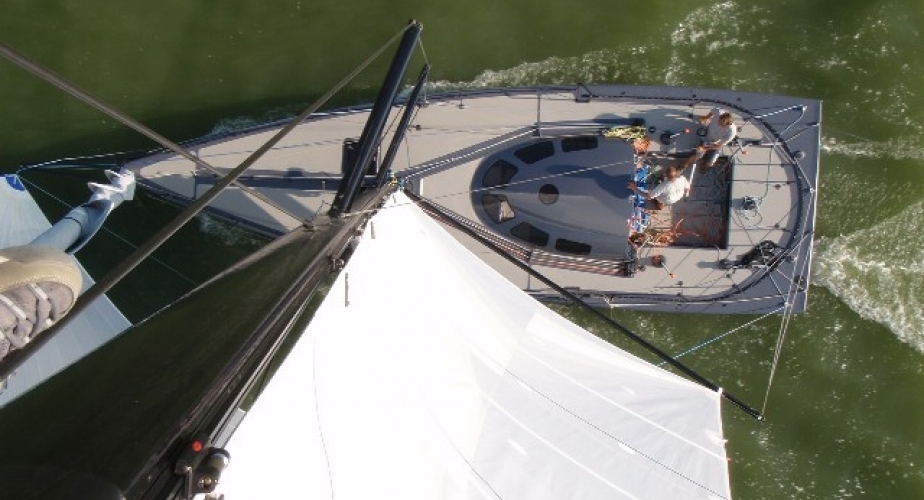
Open 40 - Ready for OSTAR
- Reference ID 51
- Builder Open
- van der Stadt Design
- Location Norway
- Engine type Single
- L.O.A. (mtr) 12.19
- Beam (mtr) 4.00
- Draft (mtr) 3.40
- Material Carbon
- Engine Yanmar with saildrive and 2-blade folding prop, also serves as generator.
Send to friend
Yacht description.
General Designed by ‘van der Stadt Design’. Built 1999/2000 by Rhebergen Composites, Amsterdam (deck and hull) and Vels Jachtbouw, Medemblik (fitting-out etc.). Re-fitted 2009, including complete new rigging, sails, deck hardware and paint job.
Comments owner:
The boat is in good shape, Engine was overhauled two years ago. All sails are good (she is sold with some older training sails in addition to full sail set). The boat got a brand new servo driver for the autopilot, and a RayMarine map/radar plotter. The rotating keel is working fine.
A model of this one-of-a-kind boat built by Van De Stadt can be seen at the maritime museum in Amsterdam. This was the first sailboat in its class to cross the Atlantic Ocean computer assisted. Pieter Adriaans and the university of Amsterdam used this boat for its experiments from early 2000. After the project was done in 2008, the boat was sold to Tuned Rigs & Ropes. In 2009 the boat was rebuilds and repainted, using only the best equipment available, mainly carbon and titanium. Tuned used the boat as a show/demo boat until 2013. This is a full carbon regatta boat in the Open 40 class, it is 12m long and 4m wide, needing 3.5m of water to sail, especially designed for OSTAR upwind cross Atlantic race. Open 40 is similar to Class 40, but with no restrictions to cost, solutions and materials. There are no other Open 40 boats in Norway, but hopefully “SOLO” and other Class 40 boats will let it compete. In short regattas the Open 40 will not be able to beat the Class 40 boats, but in long and open Ocean regattas the Open 40 got some advantages... Its speed record is 27.5 knots set by Pieter Adriaans. But since then boat has been fitted with a new custom made carbon mast almost 2 meters longer, and with a mast top genaker of 170sq/m… And the main sail increased to 100sq/m square top, and both carbon sails. The canting mast is removed as of new regulations, but the new rig is better than ever. Rather than using rod-rig, the boat now got Powerlight-PBO rigging. The rotating keel is still there fully functioning. Specifications Dimensions
Length (m.): 12.190 Beam: 4.000 Depth: 3.400 Displacement: 4.500 Ballast: 1.750 Overall length incl. bowsprit 13.700 Bulb weight 900 kgs Total mast height 21.700 mm Mainsail area 100 m2 Jib area 45 m2 Gennaker A3 area 170 m2
Construction
- Hull: Carbon sandwich with red cedar core. Re-painted in 2009.
- Deck: Carbon sandwich with Nomex core. Re-painted in 2009.
- Bulkheads etc: Carbon sandwich with foam core.
- Hydraulic rotating keel fin & bulb to provide up to +/- 4 degrees extra lift (new Holmatro hydraulics in 2009).
- Dismountable alu-bronze keel shaft with lead T-bulb.
- Two carbon rudders with carbon rudder shafts. Extendable central tiller.
- Water ballast: 1.000 litres each side, divided in 3 tanks for longitudal trim.
- Single central scoop.
- Mast custom designed carbon keel stepped Seldén mast, featuring 2 sets of swept-back spreaders and a 0 degree jumper for lateral stability. Double backstays are there for extra stability, but the mast is rigid enough to sail without them in light to moderate winds. The mast has an internal hydraulic mast jack, Lopolight carbon 3-colour/anchorlight, custom B&G masthead transducer, VHF antenna, custom swivelling radar bracket etc. A Holmatro mast winch and Spinlock ZR jammers are fitted for all foresails.
- Ronstan mainsail track for boltrope and sail cars.
- Boom is a custom built carbon boom, very light because it doesn’t have a vang (the curved track acts as vang).
- Standing rigging is all Powerlite PBO rigging with custom integrated turnbuckles. Rod forestay has a customized Furlex through-deck furler.
- Cutterstay fitting and all other deck fittings are custom light-weight TUNED pad-eyes.
- A dismountable carbon A-frame bowsprit is fitted.
- Masttop backstays are dyneema and have Karver KBTi carbon-titanium blocks.
- Checkstays are added for stability when sailing with staysail.
- Running rigging is Gleistein.
- All cores are Dyna-One HS SK75, covers are polyester/Kevlar.
Sails A full North Sails inventory:
Mainsail: 2009 North Sails 100m2 - panelled carbon - double sided Taffeta - full battened - square top - 2009 North Sails sail cover
Jib: 2009 North Sails 45m2 - panelled carbon - double sided Taffeta - horizontal CT furling battens - 2009 North Sails sail cover
Downwind sails: - masthead A3 gennaker 2011 North Sails 170m2, black - fractional A2 gennaker North Sails (appr. 2002) with snuffer - light genoa / code-1 North Sails (appr. 2002) - Code-0 North Sails (appr. 2002) - jib 4 North Sails (appr. 2002) - staysail North Sails (appr. 2002) - storm jib North Sails (appr. 2002)
Accommodations
- two pipe cots
- simple kitchen sink
- toilet prepared (taken out)
- very spacious nav. station
- large sails storage!
Deck and Cockpit
All renewed in 2009
- curved mainsail track (open 60’ style)
- 5 Holmatro winches in the cockpit and Spinlock jammers to provide maximum multi-purpose usage.
- The tiller extends out of the back of the cockpit to provide space for the 5th winch, saving weight. The tiller is telescopic: when on auto-pilot it takes only ½ the space in the cockpit.
- All blocks on deck are Karver blocks: the highest possible strength-to-weight ratio!
- All tracks are Ronstan ball bearing High-load.
- There are no genoa tracks: a downhaul and inhaul provide 3-dimensional trimming. These lines are lead below deck to new Holmatro hydraulic rams that can be operated on both sides of the cockpit (carbon panels)
- bilge pumps (1 electric, 2 manual)
- ballast pumps (1 electric, 1 manual)
- battery charger
- 220V transducer
- load cells on V1 and D1 shrouds (not connected at the moment but fully operational)
Electronics and Navigational Gear
B&G equipment incl. - speed, - depth, wind, - autopilot
- Furuno radar and gps
- active radar reflector
- 2 x built-in PC’s
The Company offers the details of this vessel in good faith but cannot guarantee or warrant the accuracy of this information nor warrant the condition of the vessel. A buyer should instruct his agents, or his surveyors, to investigate such details as the buyer desires validated. This vessel is offered subject to prior sale, price change, or withdrawal without notice.
Contact Details
- Name Site Broker | Racing-Yachts.com
- Email [email protected]
- Phone +31 (0)320 746046
- Instagram -
- Transfer Centre
- Live on Sky
- Get Sky Sports
- Kick It Out
- Black Lives Matter
- British South Asians in Football
- Work @ Sky Sports
- Terms & Conditions
- Big Race Entries
- All Meetings
- Saint-Cloud (FR)
- Turffontein (SAF)
- Aqueduct (USA)
- Charles Town (USA)
- Fair Grounds (USA)
- Gulfstream (USA)
- Oaklawn Park (USA)
- Penn National (USA)
- Sunland Park (USA)
- Turf Paradise (USA)
- Turfway Park (USA)
- Woodbine Mohawk Harness (USA)
17:30 Southwell
Bet 10 get 40 at betmgm restricted maiden stakes (gbb race) (class 5).

Buttertubs (IRE)
- Weight 8-13
- Trainer Grant Tuer
- Jockey S H James
Rating: 0.0 out of 5

Castle In The Sand (IRE)
- Official Rating 84
- Trainer A M Balding
- Jockey David Probert

Corrales (IRE)
- Trainer J Ferguson
- Jockey Daniel Muscutt

Manhattan Sunday
- Trainer Miss J A Camacho
- Jockey Ryan Sexton

Memories Maker
- Trainer C Johnston
- Jockey Jason Hart

Rock City Falls (IRE)
- Trainer H Palmer
- Jockey Harry Davies

Time Tested
- Trainer M L W Bell
- Jockey Hector Crouch

Invincible Aura
- Form 524203-
- Weight 8-11
- Official Rating 75
- Trainer M Botti
- Jockey Hollie Doyle

Signature Blue (IRE)
- Trainer J A Osborne
- Jockey Saffie Osborne

Spanish Vega (IRE)
- Trainer K P De Foy
- Jockey Benoit D L Sayette

- Trainer P W Chapple-Hyam
- Jockey L Morris

Sylvan Spirit (FR)
- Trainer Harry Eustace
- Jockey Hayley Turner
Buttertubs (IRE) Free Eagle gelding out of Princesa Del Sol.
Castle In The Sand (IRE) 11-8fav (9-7) Led, ridden and headed over 1f out, no impression on winner inside final furlong, kept on, 2nd of 6, 1 1/2l behind Zayina (9-2) at Brighton 1m stks (4) sft in Oct.
Corrales (IRE) 11-1 (8-13) Midfield, chased leaders from halfway, short of room when making headway before 1f out, switched right and ran on when in clear to go fourth inside final furlong, never nearer, 4th of 13, 4l behind Roberto Caro (8-9) at Kempton 7f mdn stks (5) pol in Feb.
Manhattan Sunday 125-1 (9-7) Always towards rear, never involved, 11th of 12, 25 3/4l behind Quiet Resolve (9-7) at Newcastle 7f mdn stks (4) pol in Feb.
Memories Maker 11-4 (8-11) Midfield, ridden 2f out, kept on, 4th of 9, 4l behind Star Studied (8-11) at Southwell 1m mdn stks (4) pol in Feb.
Rock City Falls (IRE) 12-1 (8-11) Held up in mid-division, headway over 1f out, never troubled leaders, 6th of 12, 10 1/2l behind Suspicion (8-11) at Kempton 1m stks (5) pol in Feb.
Time Tested Time Test colt out of Luzia.
Invincible Aura 2-1fav (9-2) Tracked leaders, clipped heels over 3f out, driven over 1f out, kept on for 3rd, 3rd of 12, 1/2l behind Almarada Prince (10-4) at Chelmsford City 6f stks (5) pol in Oct.
Signature Blue (IRE) Gregorian gelding out of La Femme.
Spanish Vega (IRE) 28-1 (9-2) Raced wide close up, pushed along 2f out, weakened final furlong, 9th of 13, 7 1/4l behind Arcturian (9-4) at Kempton 1m stks (5) pol in Dec.
Blake 7-2 (9-2) Chased leaders, switched left 2f out, every chance inside final furlong, 3rd and held towards finish, 3rd of 9, 1/2l behind Dr Foster (9-2) at Kempton 1m stks (2) pol in Oct.
Sylvan Spirit (FR) Waldgeist filly out of Feline Groovy.

IMAGES
VIDEO
COMMENTS
Association Class40 - Centre de formation aux métiers de la mer - Allée du frère Maximin - 85 100 Les Sables d'Olonne - France
The Class40 association gathers the skippers of Class40 yachts and any person interested in their evolution. The Class40 is a monohull sailboat sea-oriented racing and cruising with a maximum length is 40 feet. The original goal of the class was to make offshore races accessible to amateur sailors. The success of the class has moved it beyond ...
The box rule's basic parameters are a maximum length overall of 39 feet, 11 inches; max beam of 14 feet, 9 inches; draft of 9 feet, 10 inches; average freeboard of 3 feet, 6 inches; max mast ...
The event. The GLOBE 40 is a Round the World race, which is accessible to both informed amateurs and professional skippers. It is a Round the World, which combines competitive performance, adventure and travel, a Round the World whose course takes skippers off the beaten track and offers up some unique stopovers, a Round the World on a craft that is accessible both competitively and financially.
Cole Brauer, a young American sailor, entered in the Global Solo Challenge aboard her Class40 First Light, adds a feminine touch to the event with her infectious enthusiasm and passion for sailing. Cole works tirelessly to prepare for her round-the-world trip and has assembled a team that shares her values and assists her in managing the project.
The Class 40 is a cheaper boat that can be sailed competitively in a range of conditions either short handed, by two people, or a solo sailor. The class is active in Europe, but growing in North America. Boats are built on a semi-production or custom basis. The class rules though work to keep the boat affordable, limiting exotic materials and ...
THE DOUBLE-HANDED CLASS40, AN OBVIOUS FORMAT. The reference monohull craft for offshore racing (together with the 60-footer for the Vendée Globe), which features on the start lines of all the major offshore races in fleet format, the Class40 boasts all the qualities sought after for this planetary adventure. With some 160 boats already built ...
This means it is a multi-class race: Class40s, Multi50s, Eco60 and others. The very first Transat Québec Saint-Malo set sail in 1984 to mark the 450th anniversary of explorer Jacques Cartier's first voyage from Saint-Malo to the Gulf of St. Lawrence in 1534. Every four years, the Transat Québec Saint-Malo has brought together the best ...
Class40 start - RORC Caribbean 600. Class40 winner - James McHugh's Tquila (GBR) - RORC Nelson's Cup Series - Day 3. Manuard Mach 5 Class40 LHOROne (FRA) - RORC Caribbean 600. Alexis Loison - Manuard Mach 5 Class40 LHOROne (FRA) - RORC Caribbean 600. William MacBrien rescued after 46 hours adrift semi-submerged in south Pacific.
THE BOAT: The boat with is a latest generation Class40, with a scow bow. Designed by French naval architect Sam Manuard and built by the JPS Production shipyard, the boat is a Mach 5 model, the ...
The Class40 fleet certainly stands out in the docks in the Paul Vatine dock. The class with the most boats, with 31 boats recognisable in particular because of their rounded bows. This armada of "scows" with their peculiar bows proves how dynamic the 40-foot circuit is, attracting skippers from all sorts of backgrounds with a large number of favourites competing against a certain number of ...
The first American woman to race solo, non-stop and unassisted around the world Solo sailor Cole Brauer has become the first American woman to race solo, nonstop and unassisted around the world, finishing the Global Solo Challenge March 7, at 8:23am CET after 130 days at sea. Posted on 7 Mar The harsh reality of the Global Solo Challenge
Merfyn Owen: "Our first Owen Clarke Class 40 was launched in 2005 as well. The last of our designs was launched in 2014 with boat number 17. The first of our fifth generation Class 40 racer design is build in South Africa and boat eighteen been ordered already.". Britton Ward: "In 2009 the class was a rapidly expanding market area and one ...
The Class 40 began in 2004 as a scaled-down, less-expensive version of the Open 60 and Open 50 monohulls that are the darlings of professional shorthanded offshore racing in Europe. The idea was to give amateurs an affordable class that was a step up from the Mini Transat 6.5, but pros have since embraced the boat as well.In the 2006 Route du Rhum race from France to Guadeloupe, 25 Class
The Class40 is a monohull dedicated to offshore racing. This boat has existed since 2004 as an intermediate oceanic boat, between the Mini 650 (6.50m) and the 60-foot Imoca (18.24m). A boat framed by a strict gauge: - Maximum length: 12.19 m. - Maximum width: 4.50 m.
20.000+ Miles sailed. Currently racing Six Meter class sailboats locally and Internationally and supporting racers in the Race to Alaska "R2AK" with race preparation and support. About the Boat. Boat name: Koloa Maoli Project: Jazz Marine Class 40 (Owen Clarke Design) Sail number: USA 15 Year: 2006 LOA: 40ft Displacement: 4500kgs Upwind ...
Class 40 is a box rule that has produced boats that are capable of racing fully crewed (typically 3-5 persons) in classic events such as the Fastnet, Bermuda Race, as well as short-handed in races such as the AZAB, TJV and Atlantic Cup. With our latest design that has changed: Dragon 2 has been specifically designed for the Route du Rhum, with ...
Description: The Atlantic Cup is a premier Class 40 offshore racing series held along the East Coast of the United States. It features multiple legs and attracts international competitors. ... Description: The Southern Straits Yacht Race is a challenging overnight race that begins and ends in Vancouver, British Columbia. It's known for its ...
A monohull is a boat with a single flotation plane at rest or under sail, whose hull depth in any transversal section shall not decrease towards the centreline. The current World Sailing (RRS, ERS and OSR) rules apply. The Rules for Class 40 Monohulls are the open type set out in Paragraph C.2.3 of the ERS (Equipment Rules of
Class 40. Class 40 is a yacht manufacturer that currently has 18 yachts for sale on YachtWorld, including 1 new vessels and 17 used yachts, listed by experienced yacht brokers mainly in the following countries: France, Croatia, United States, Spain and Netherlands. YachtWorld offers a diverse array of models, showcasing a comprehensive range of ...
Aboard her 40-foot racing boat First Light, 29-year-old Cole Brauer just became the first American woman to race nonstop around the world by herself.
History. Class40 was born as a result of the distillation of excellent yet simple ideas. Designers, sailors and boat builders had been working on the idea of a dedicated offshore race boat for some years prior to the creation of the Class in 2004. A boat somewhere in between a Series Mini and an ocean-going 60 footer.
This is the sub listing page for OC Performance Yacht Brokerage Services, specialists in Class 40 Open yacht sales and brokerage. We are an international sailboat broker with specialist experience in the design, operation and brokerage of pre-owned Class 40 racing yachts that are for sale in the UK, USA and a vendre, worldwide.
In 2009 the boat was rebuilds and repainted, using only the best equipment available, mainly carbon and titanium. Tuned used the boat as a show/demo boat until 2013. This is a full carbon regatta boat in the Open 40 class, it is 12m long and 4m wide, needing 3.5m of water to sail, especially designed for OSTAR upwind cross Atlantic race.
20:00 Wolverhampton Bet 10 Get 40 At BetMGM Handicap (Rider Restricted Race) (Class 6) 7 Runners Distance: 1m 142y Going: Standard
Buttertubs (IRE) Free Eagle gelding out of Princesa Del Sol. Castle In The Sand (IRE) 11-8fav (9-7) Led, ridden and headed over 1f out, no impression on winner inside final furlong, kept on, 2nd ...
Unofficial Race Results ... Deletraz, driving the final stint in the No. 40 Wayne Taylor Racing with Andretti Acura ARX-06 that he shared with Jordan Taylor and Colton Herta, was running second to Bourdais in the No. 01 Cadillac Racing Cadillac V-Series.R on the final restart from a full-course caution with just over 20 minutes remaining ...